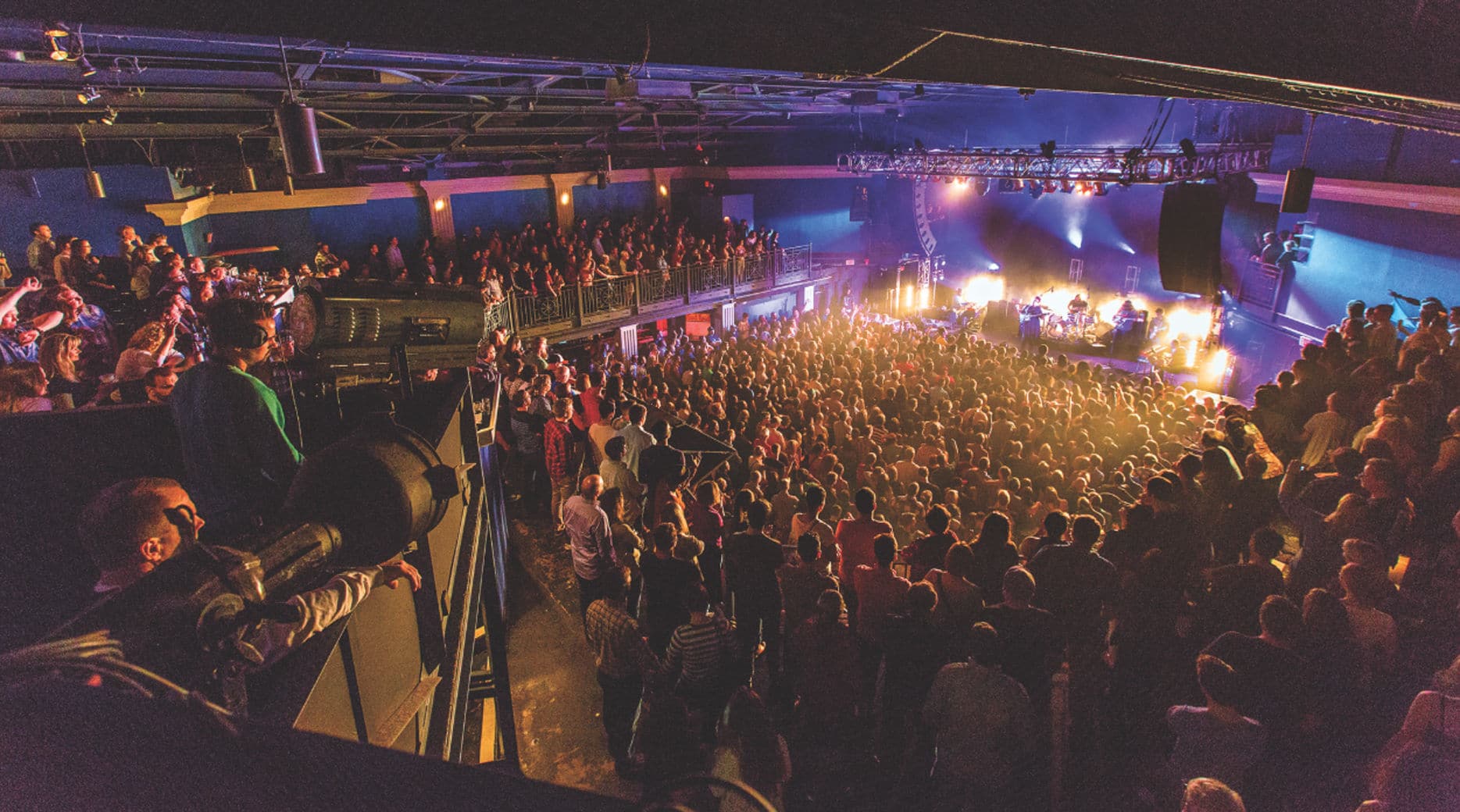
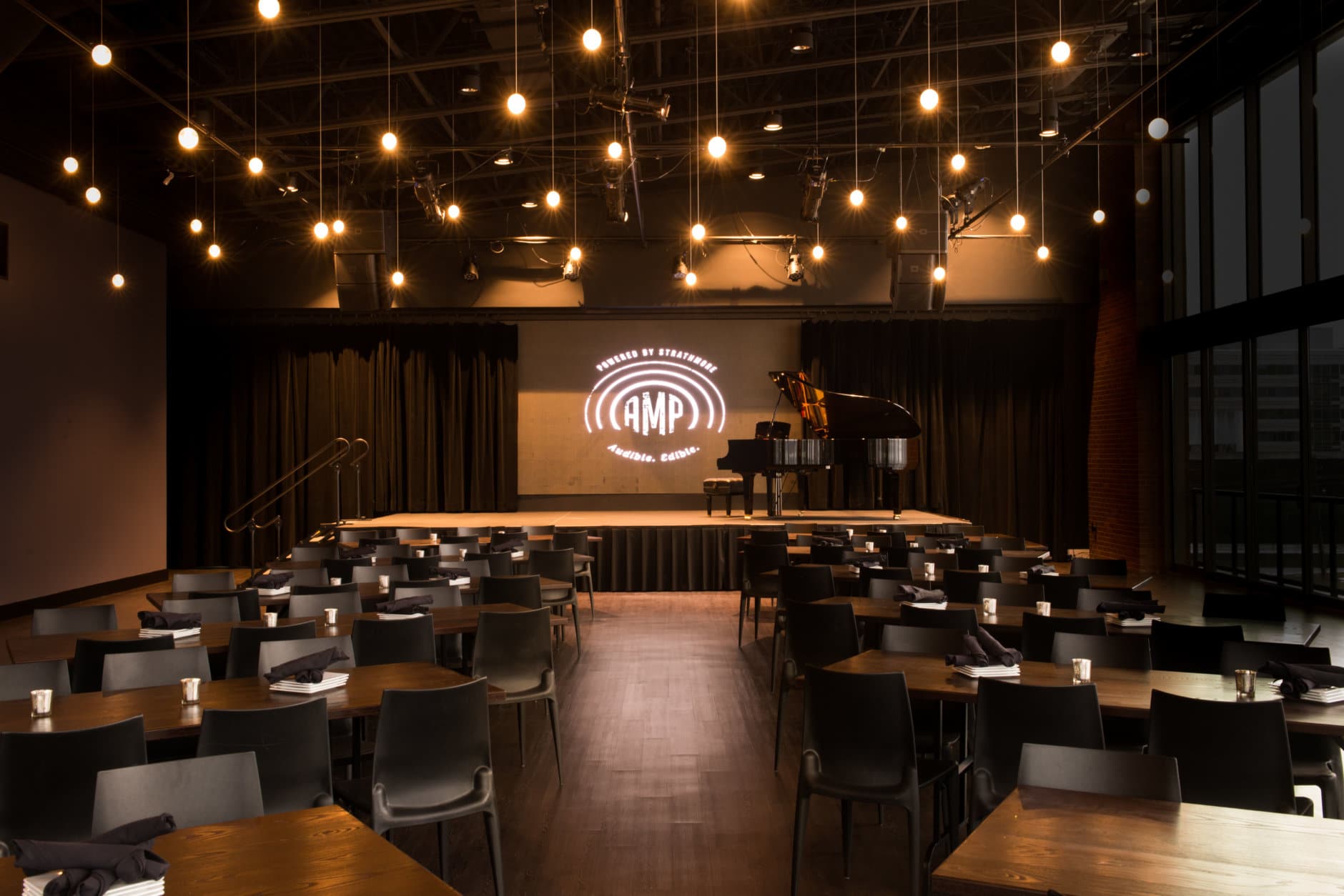
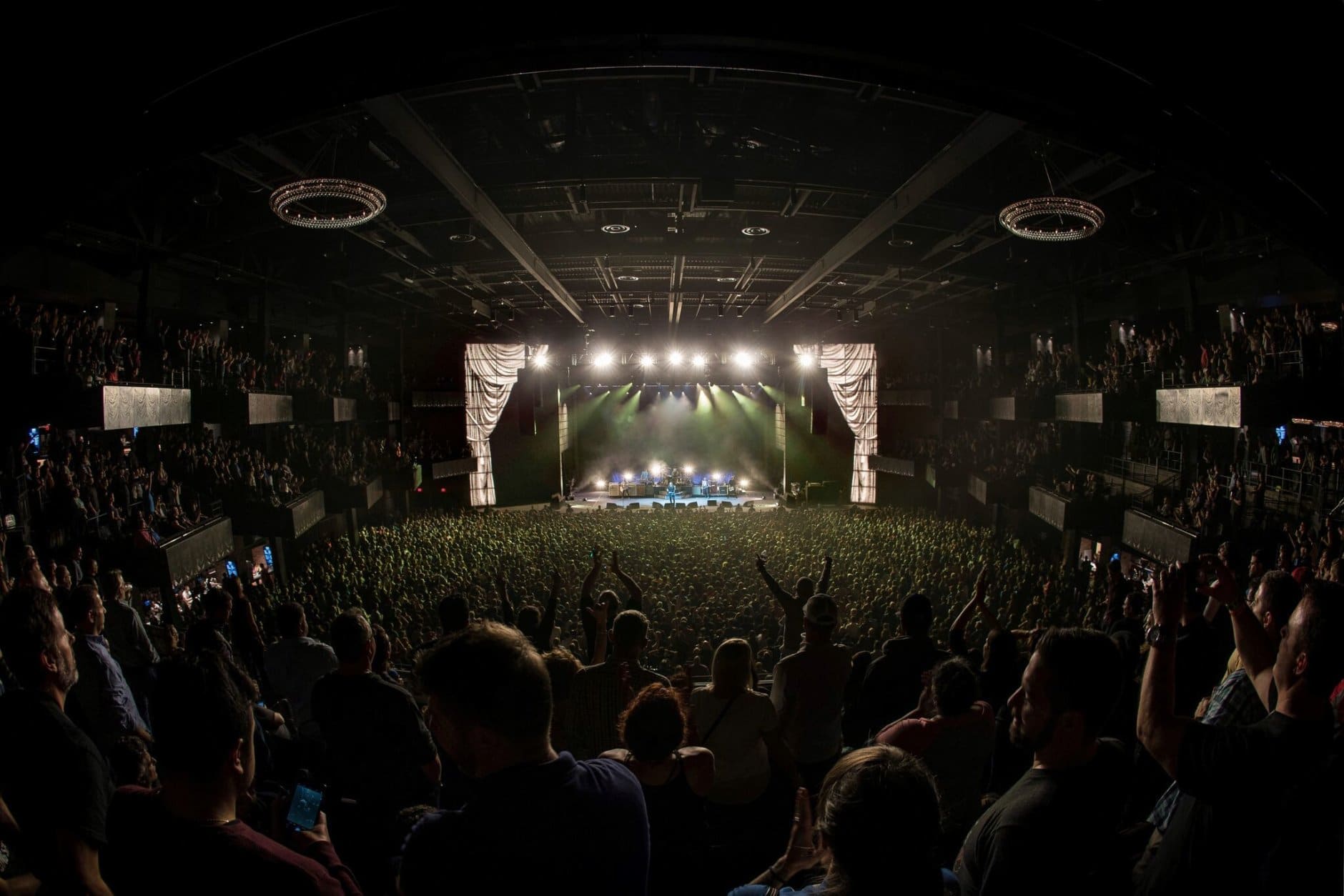
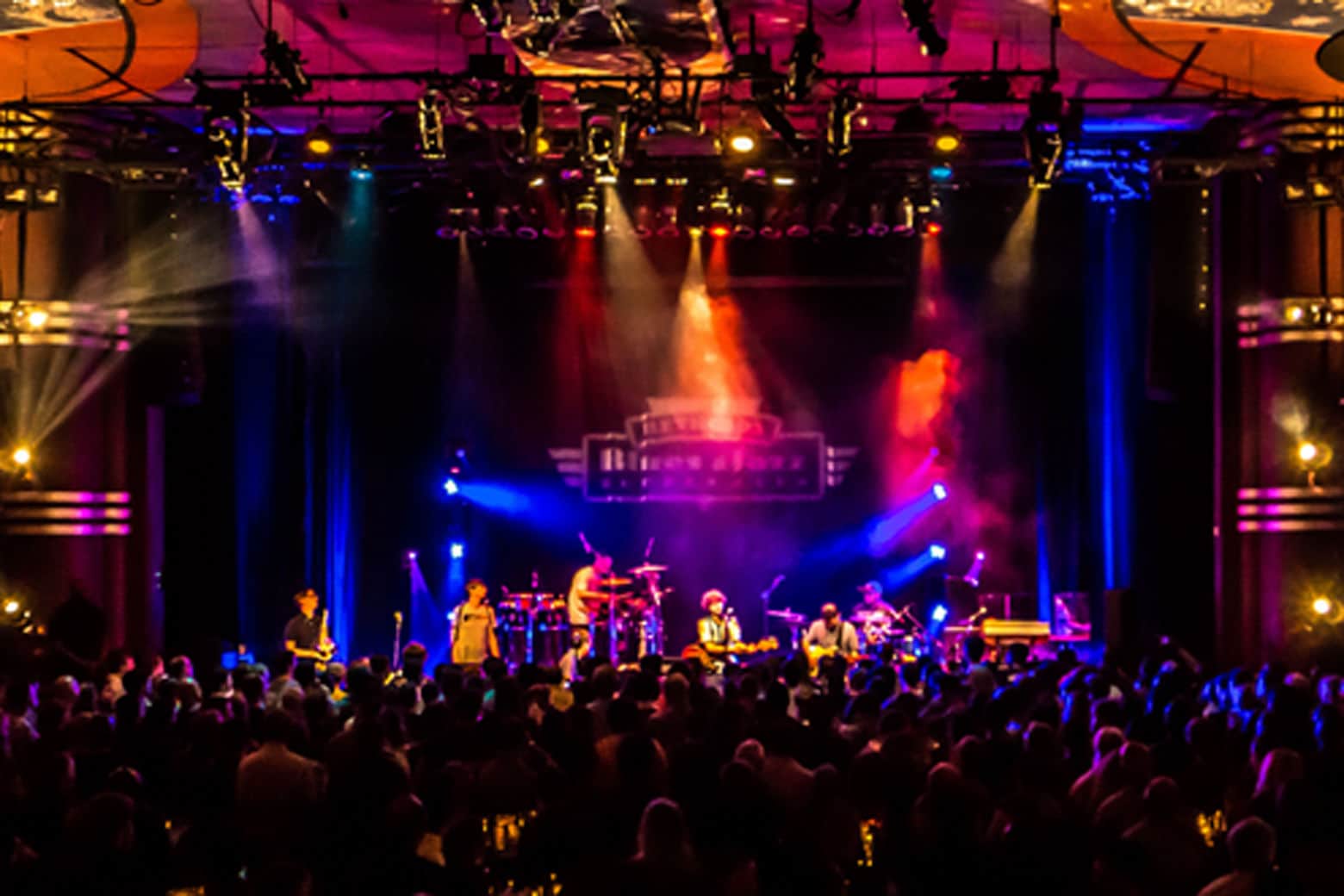
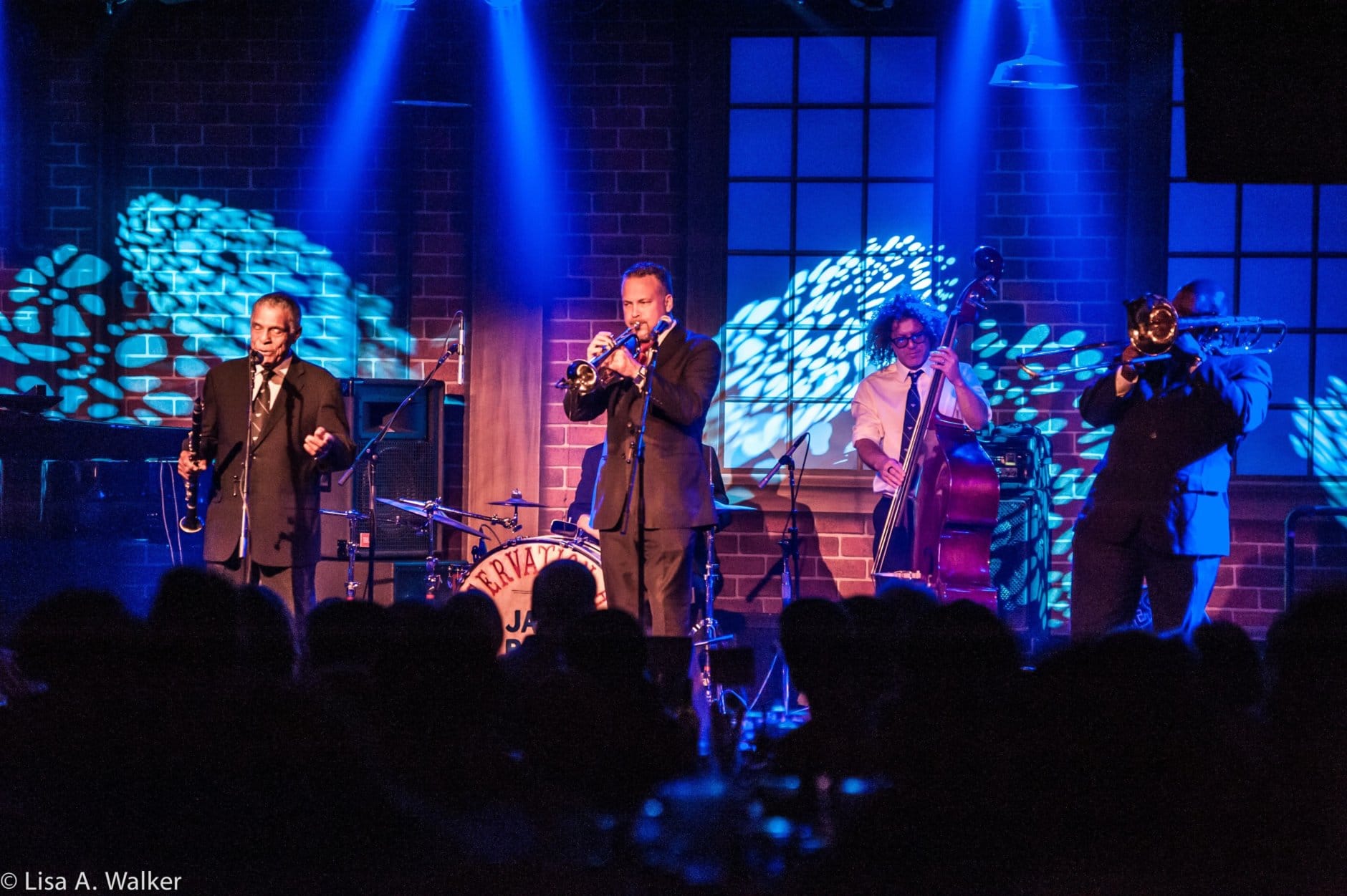
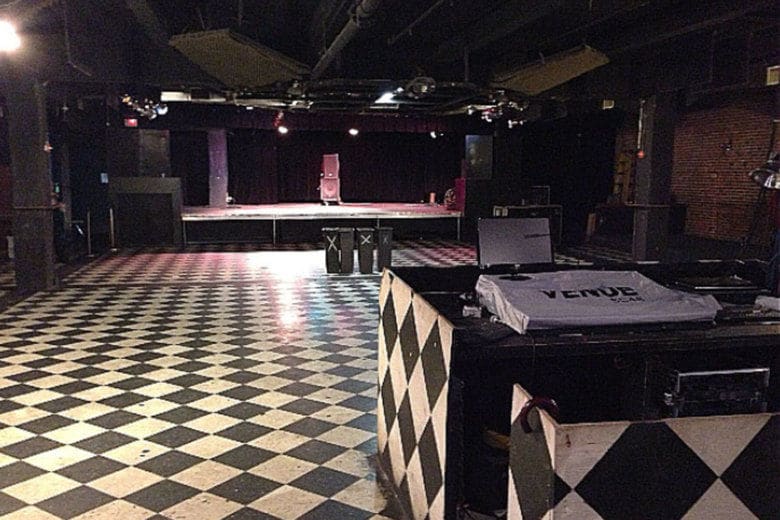
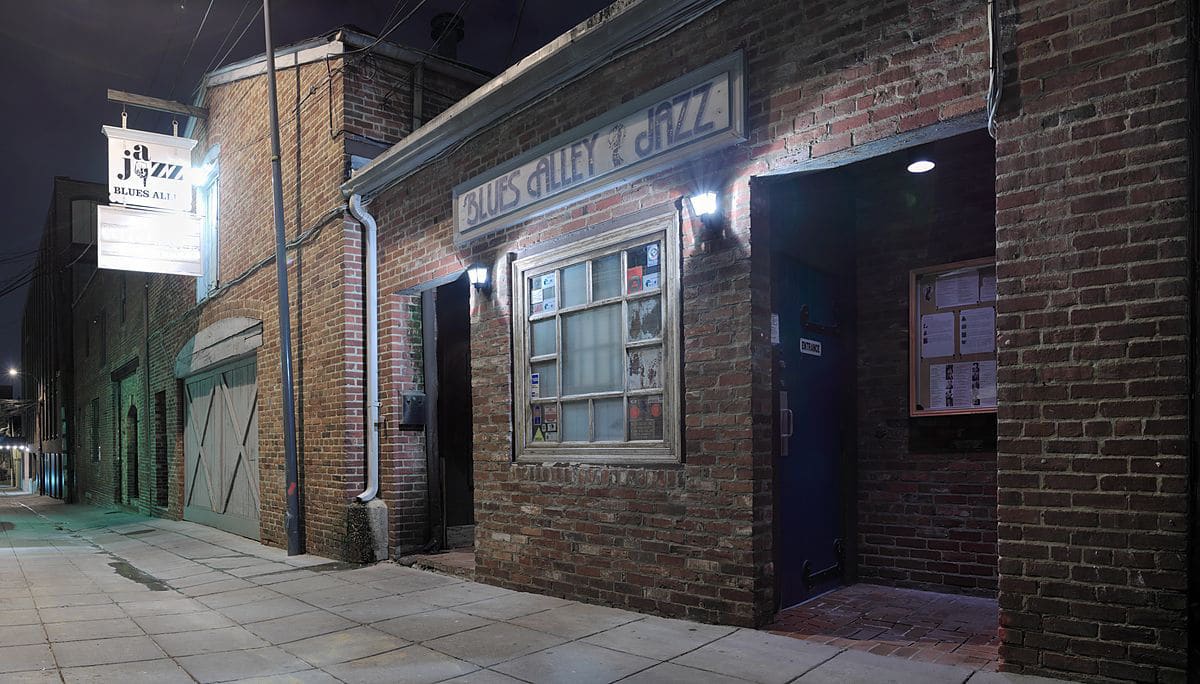
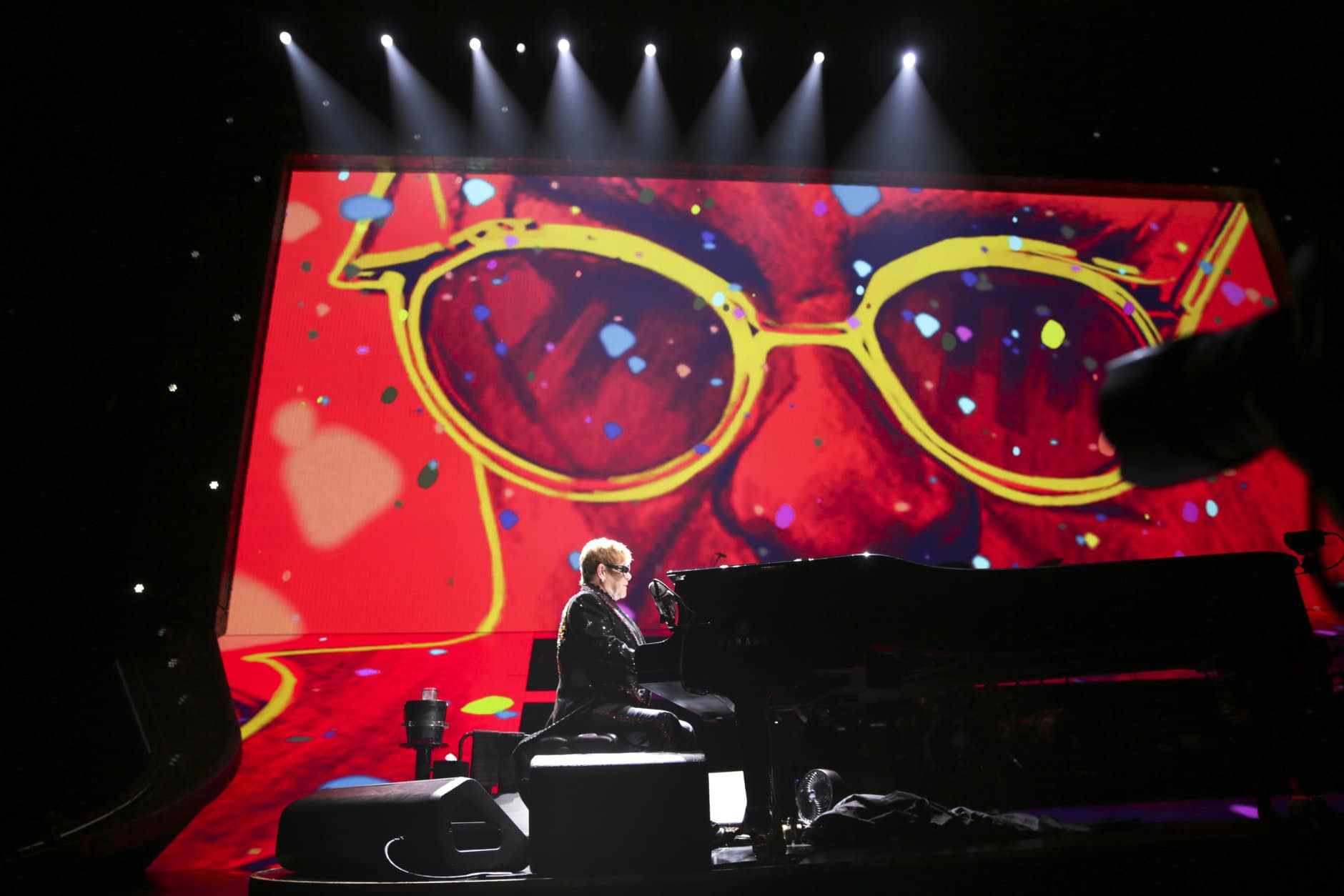
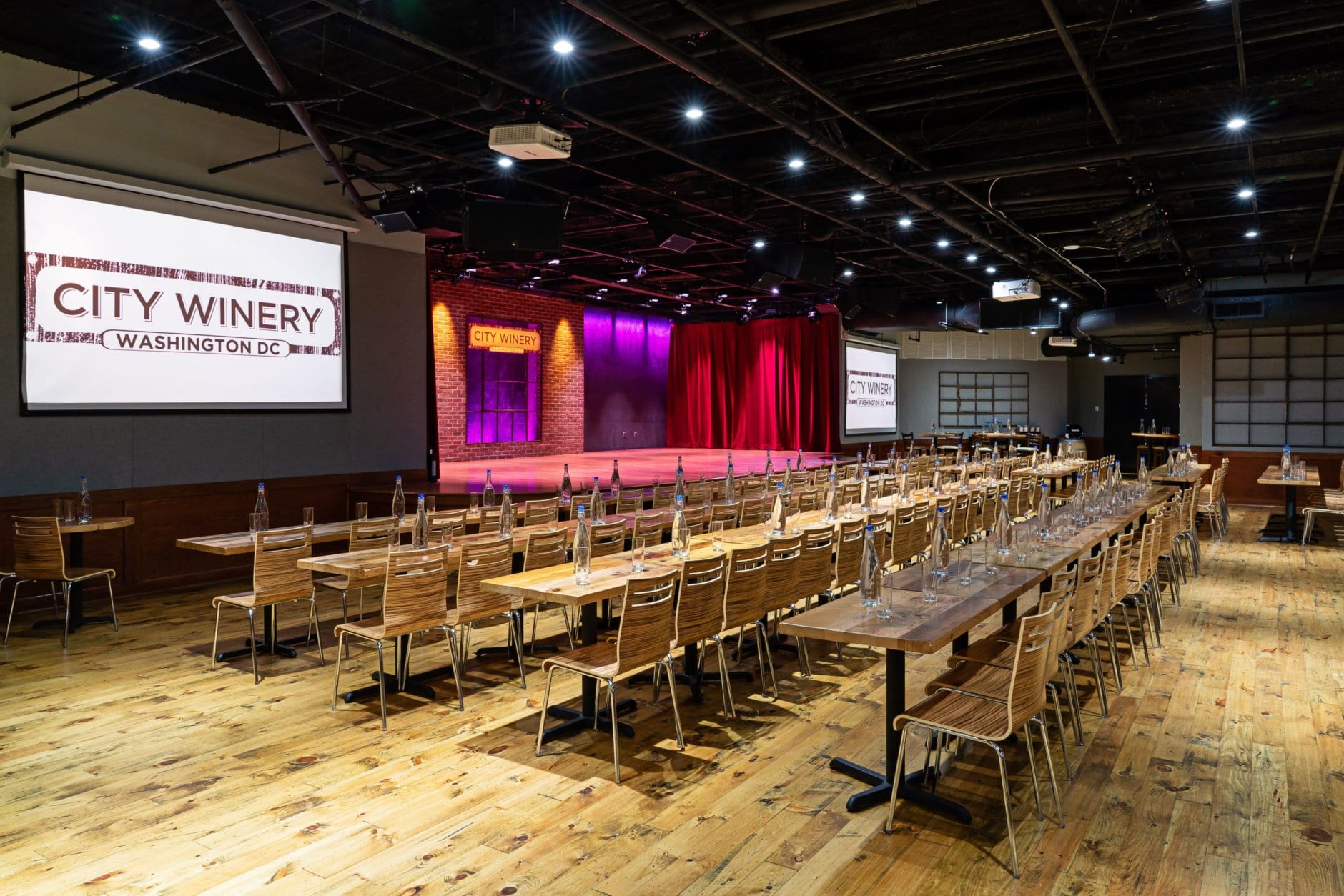
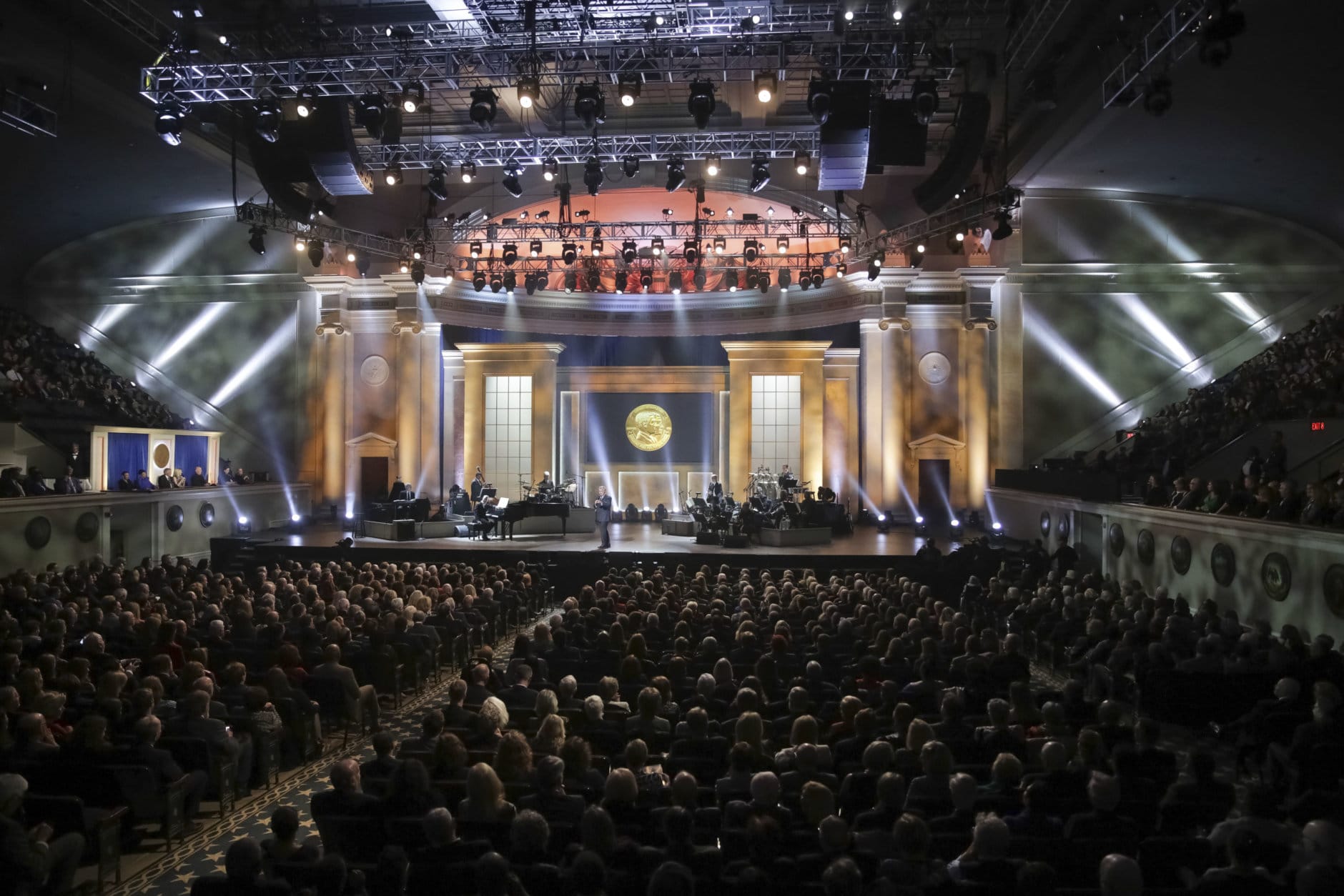
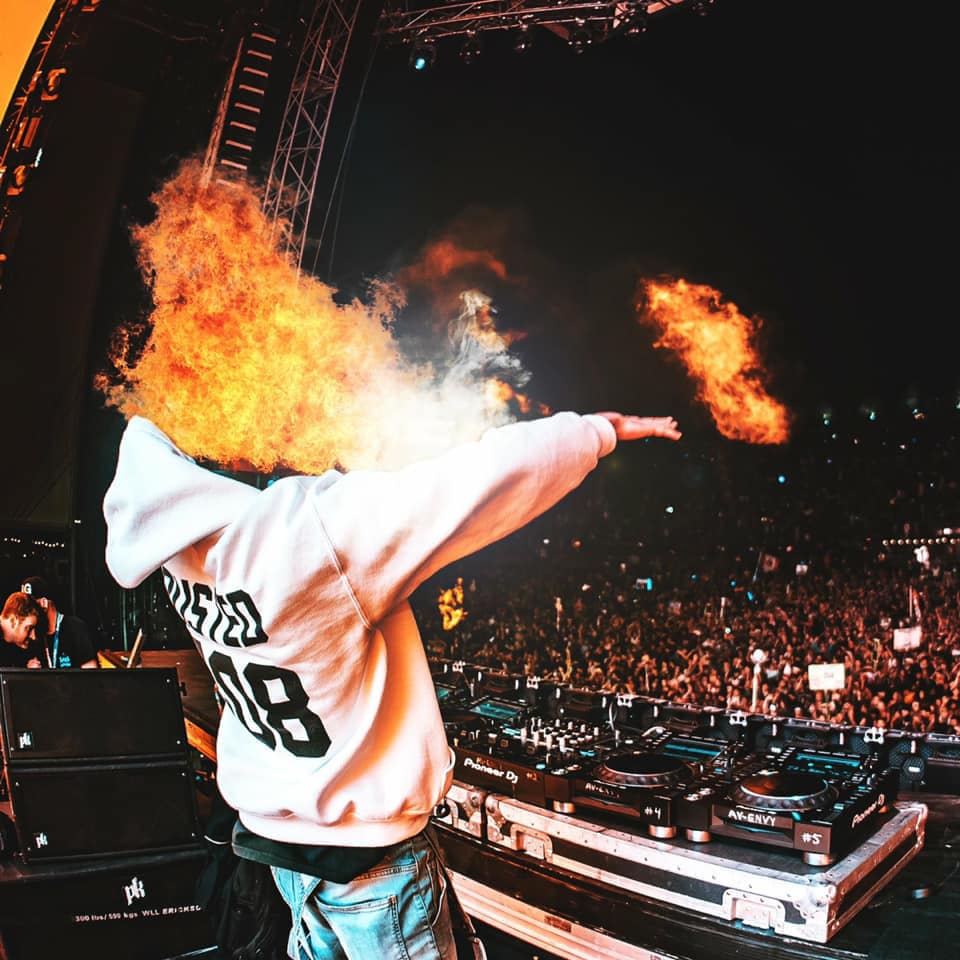
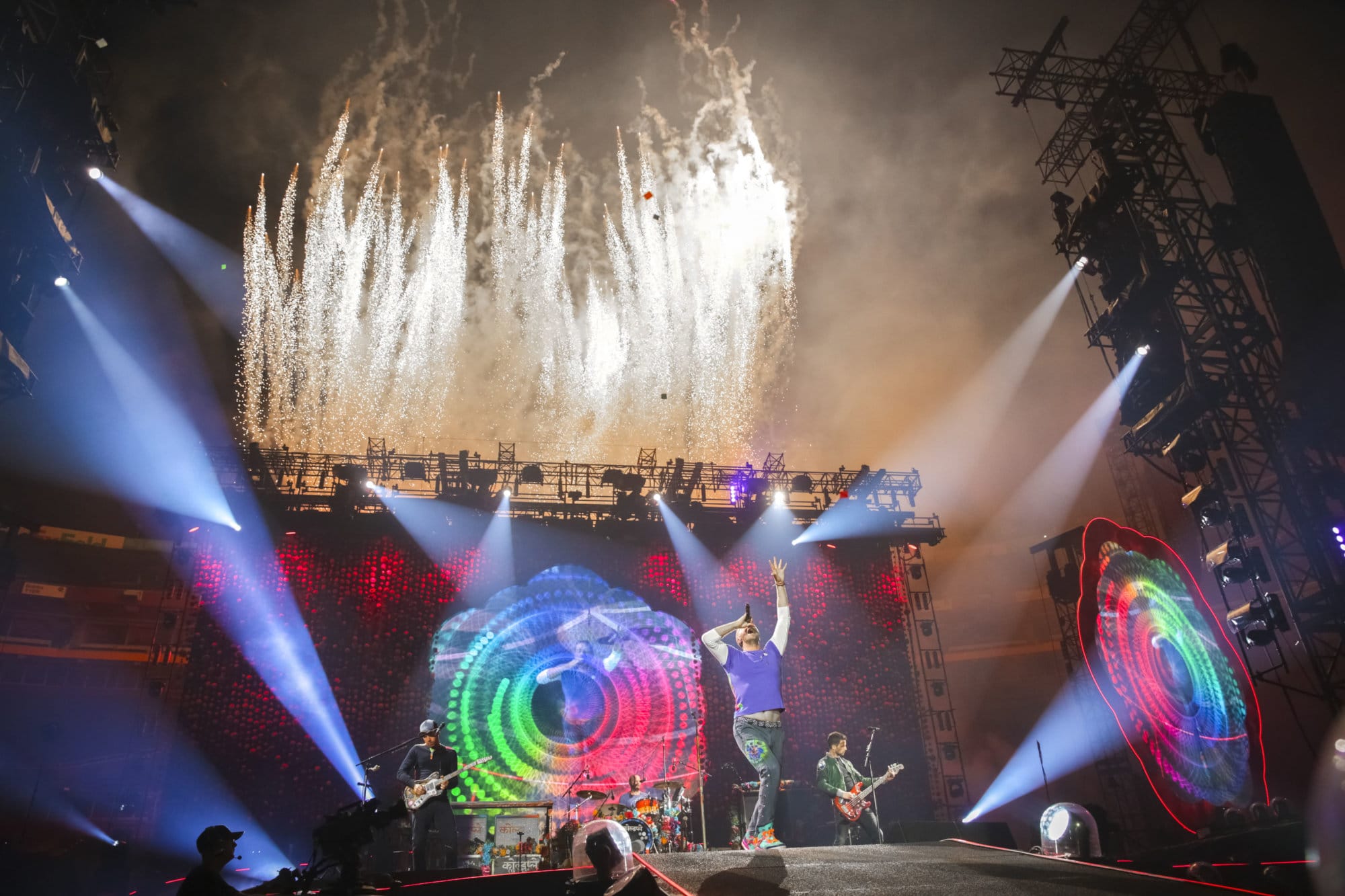
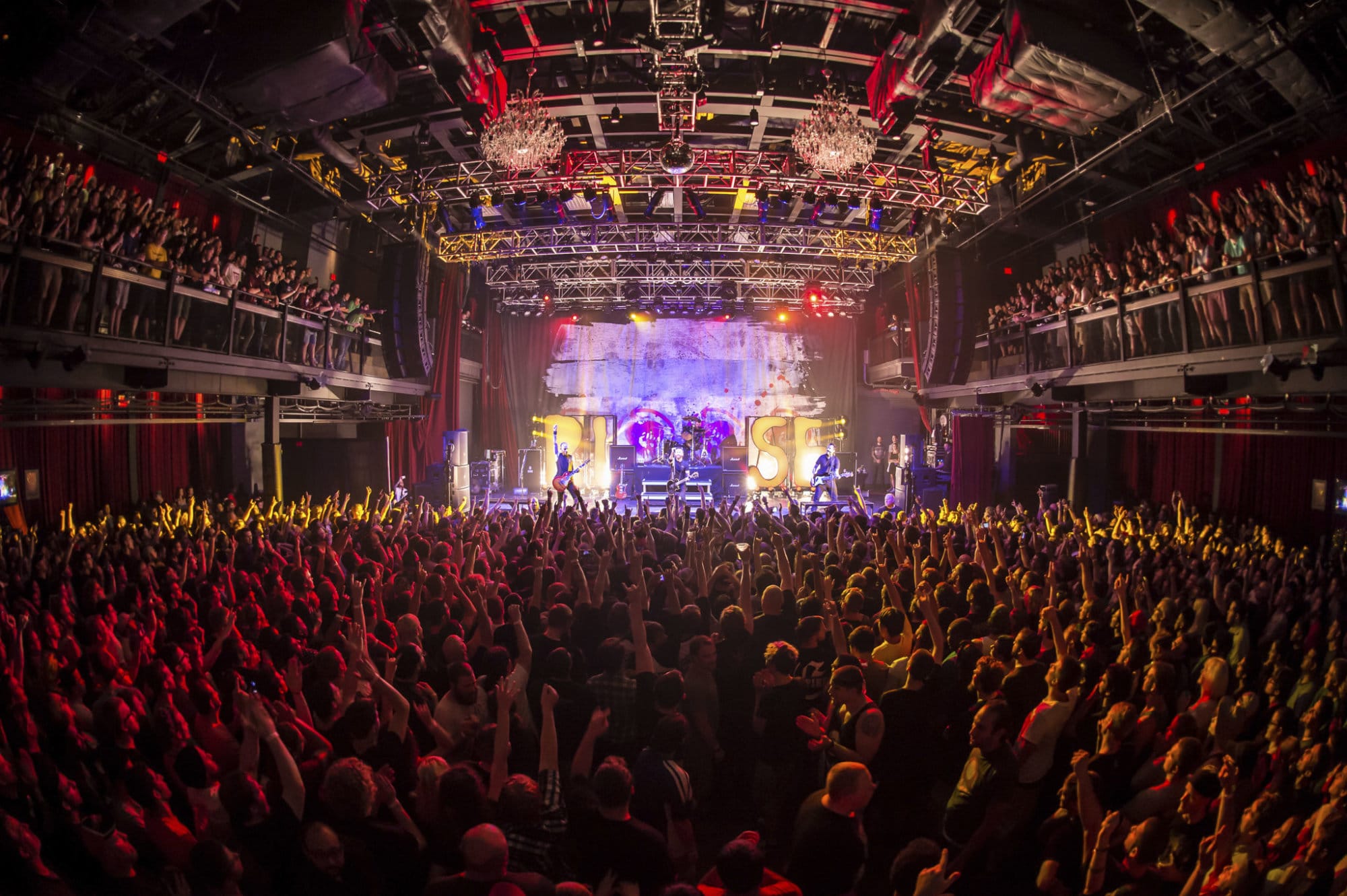
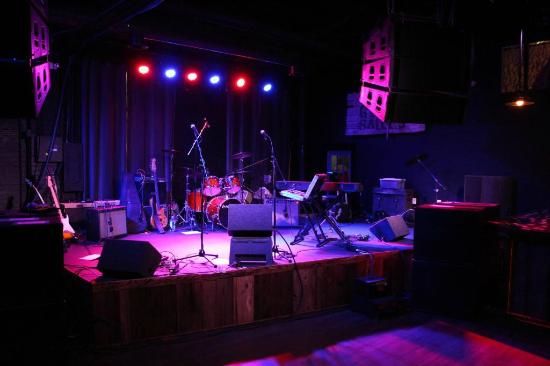
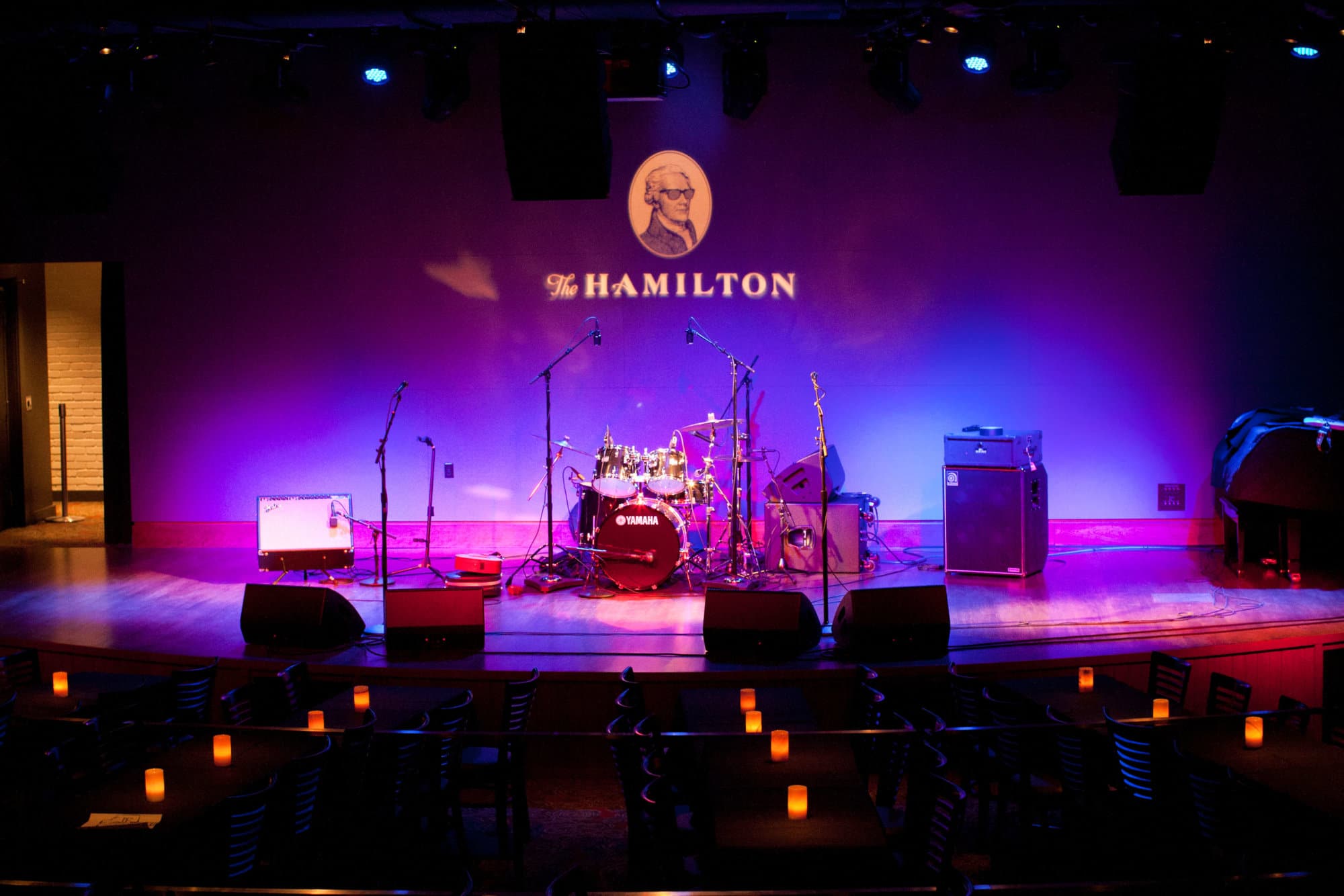
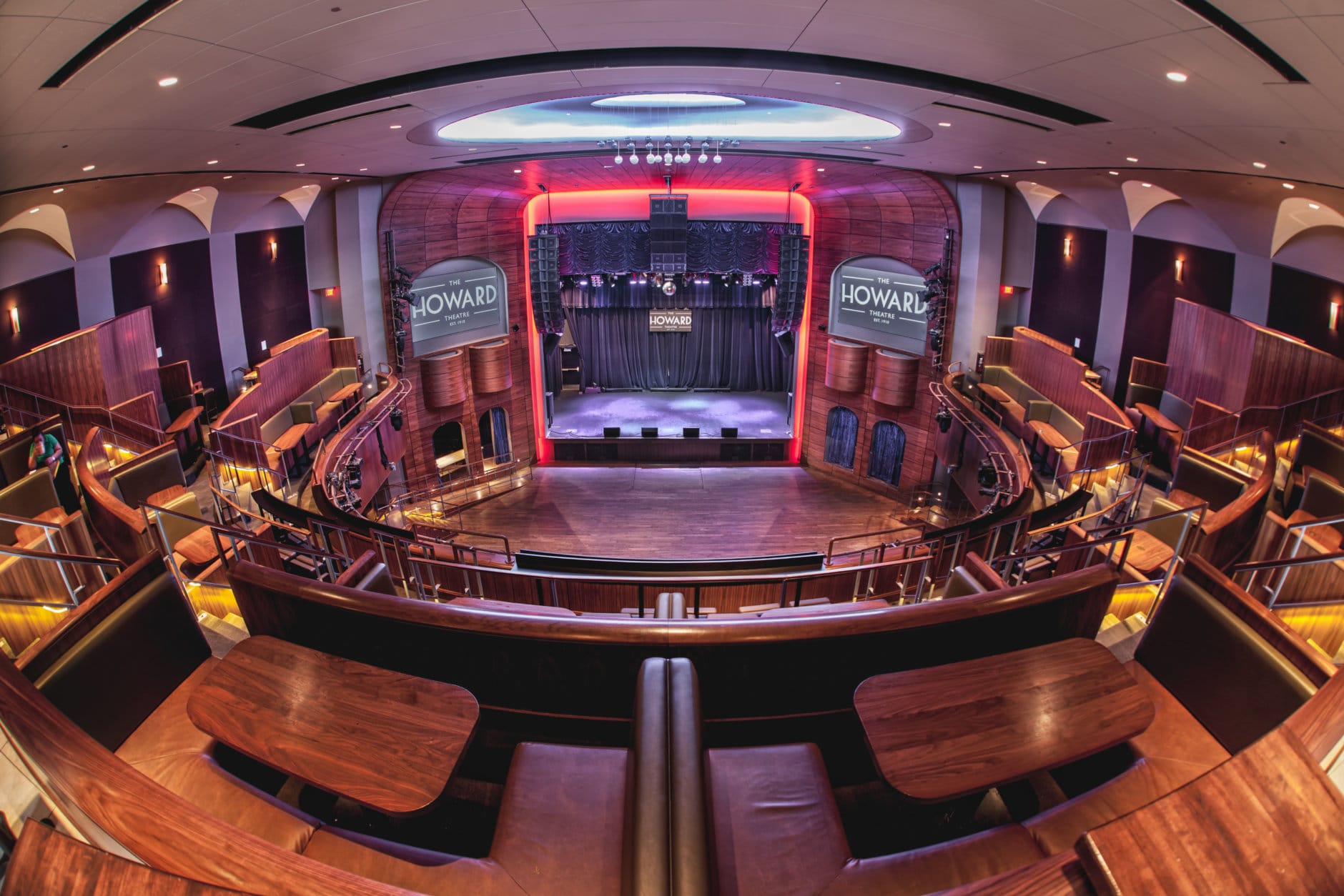
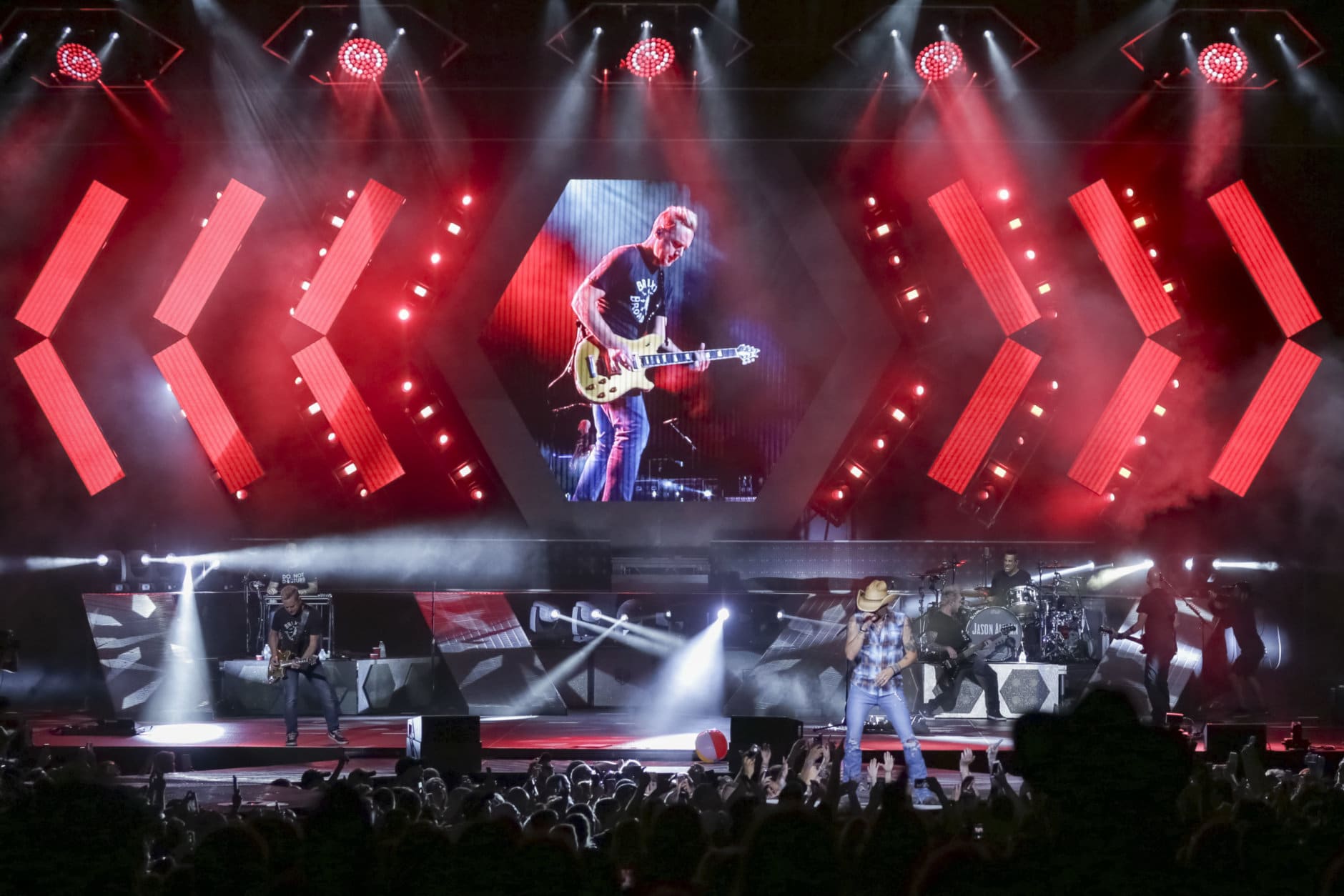
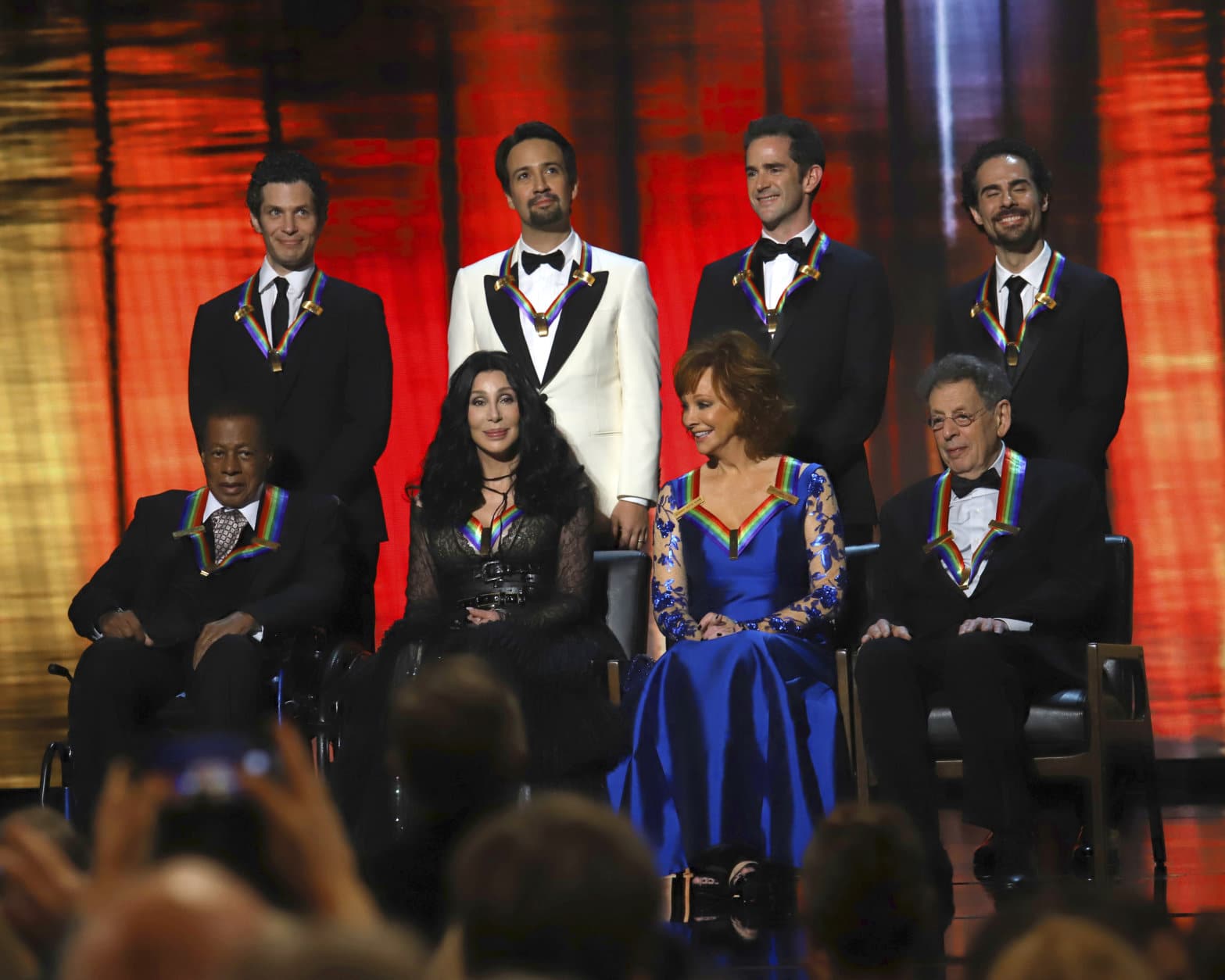

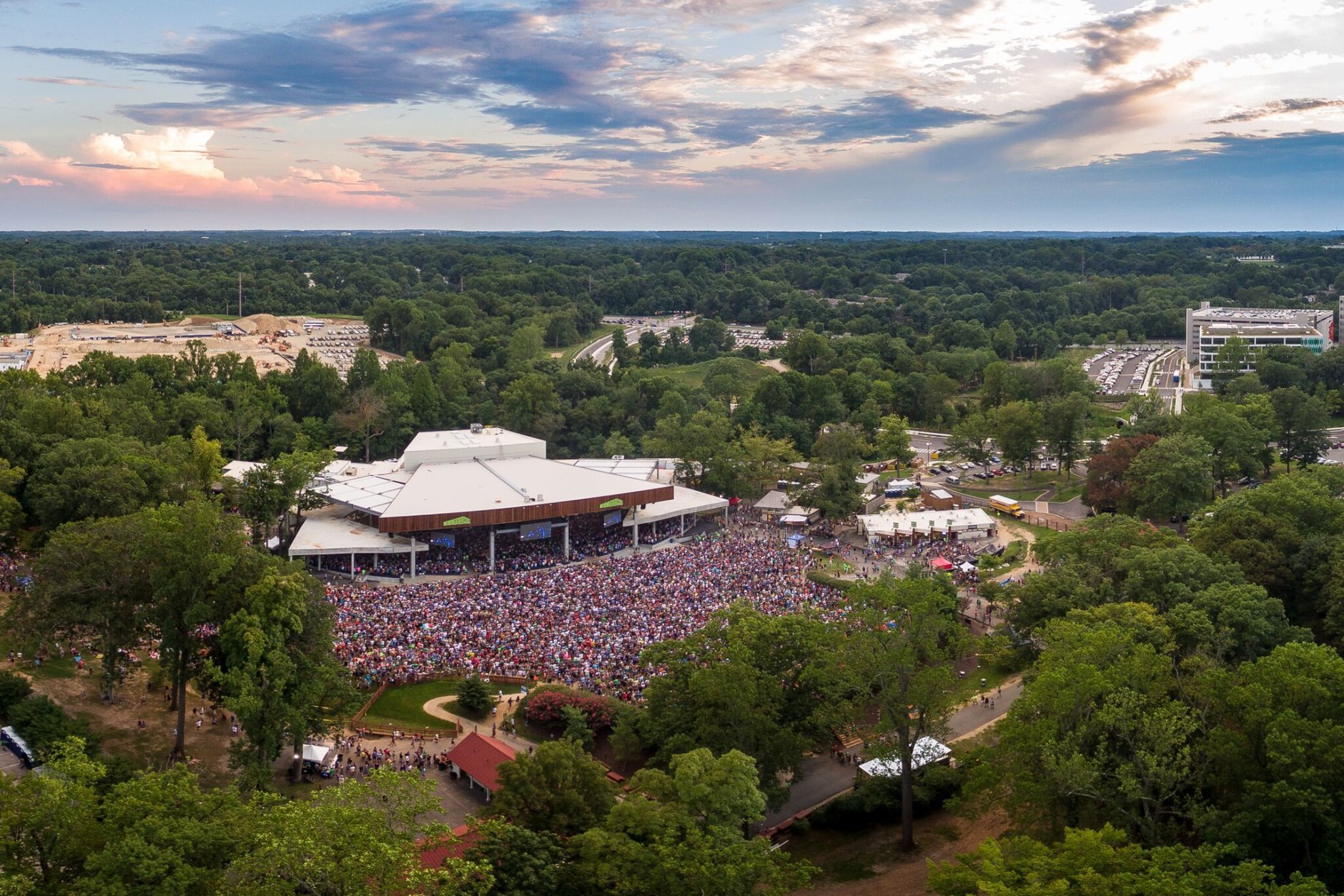
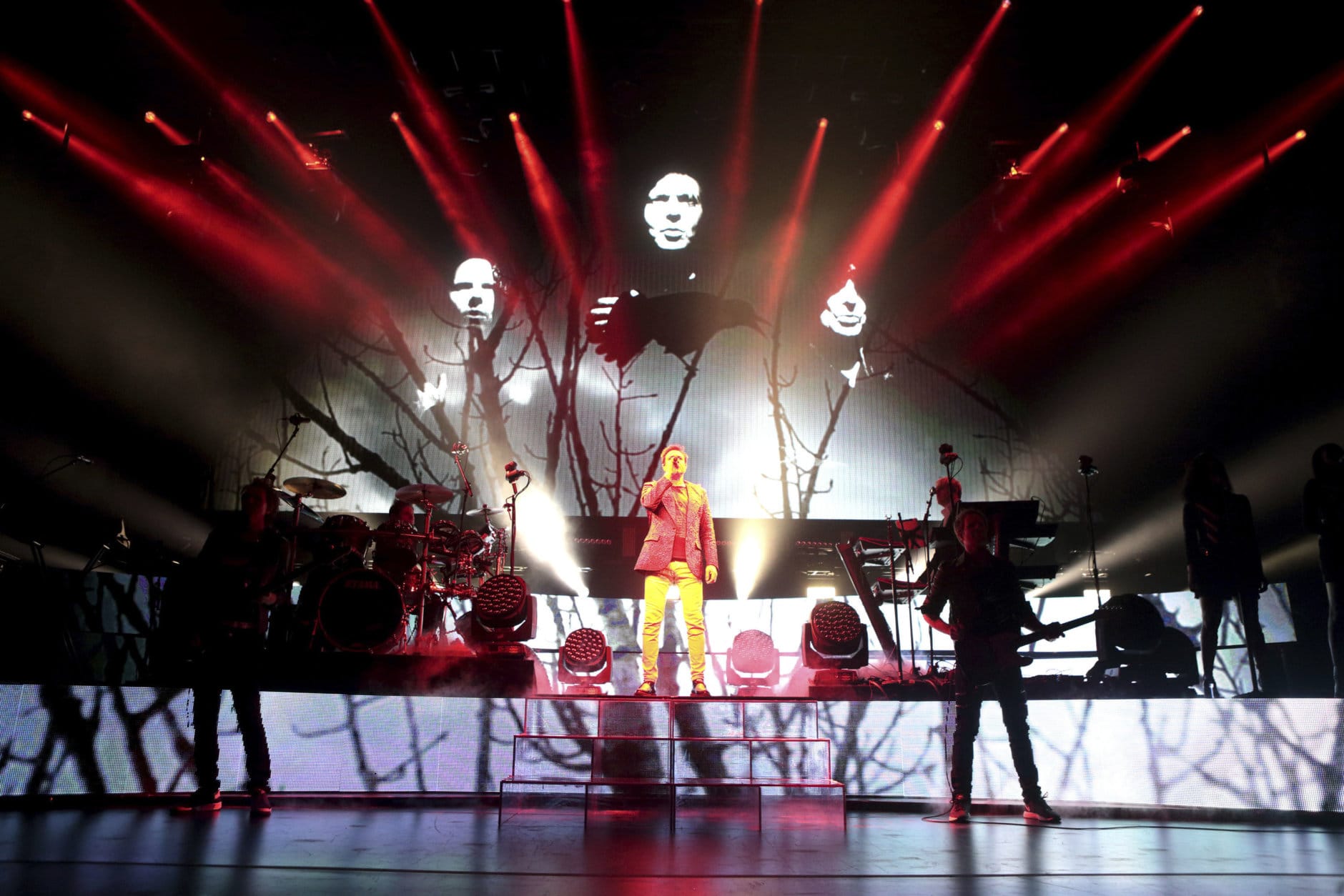
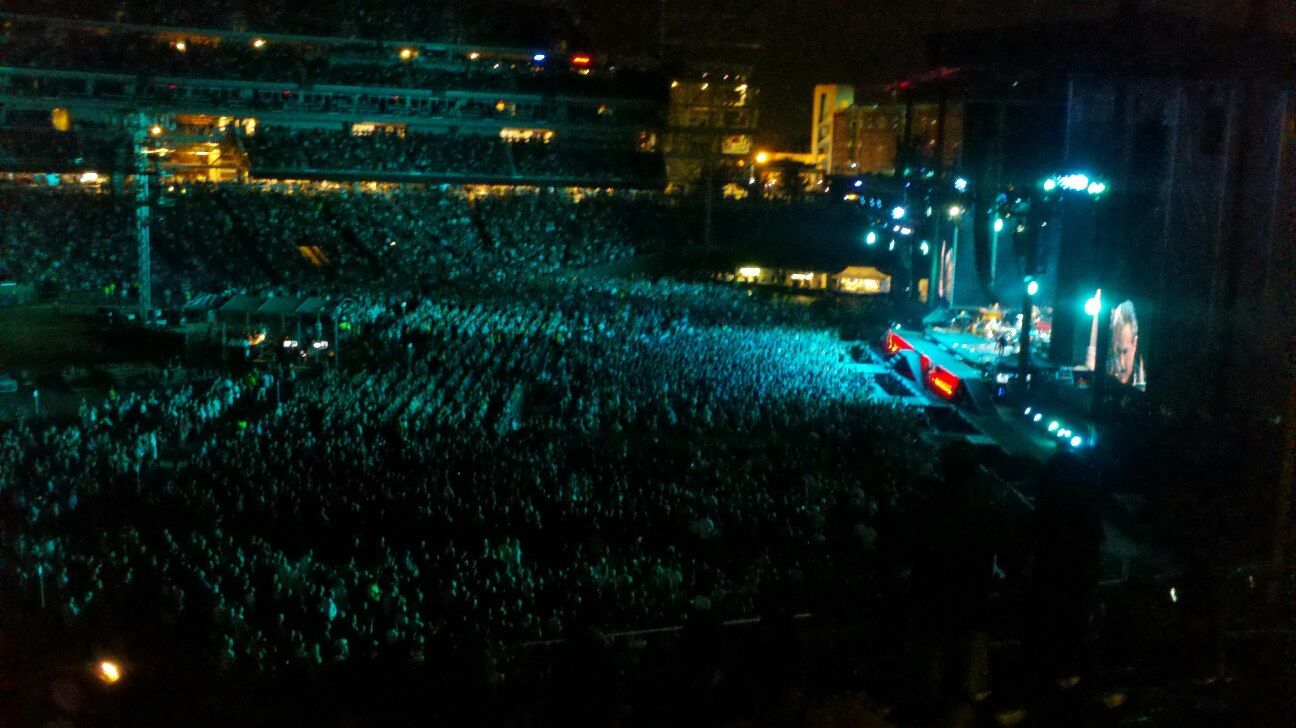
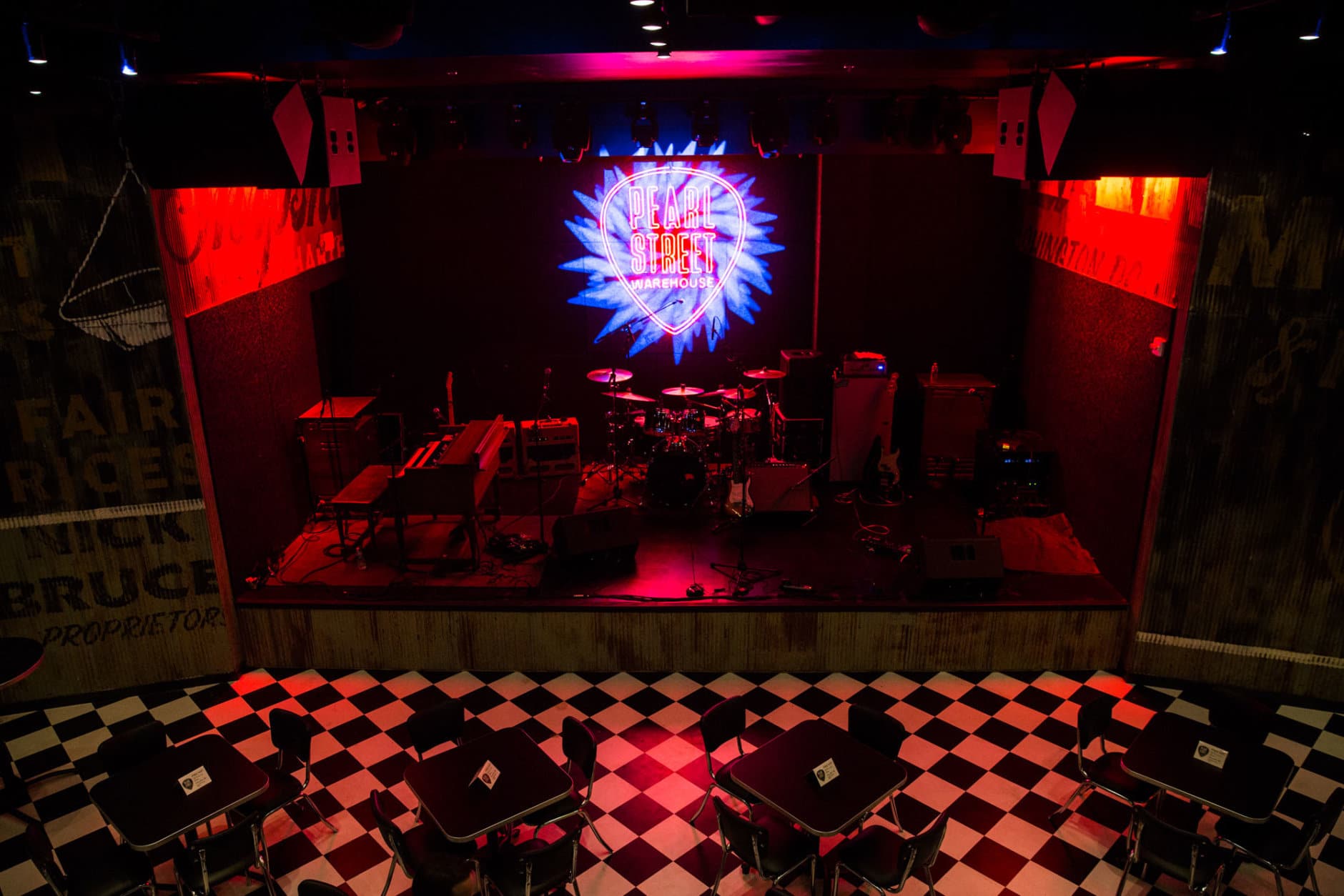
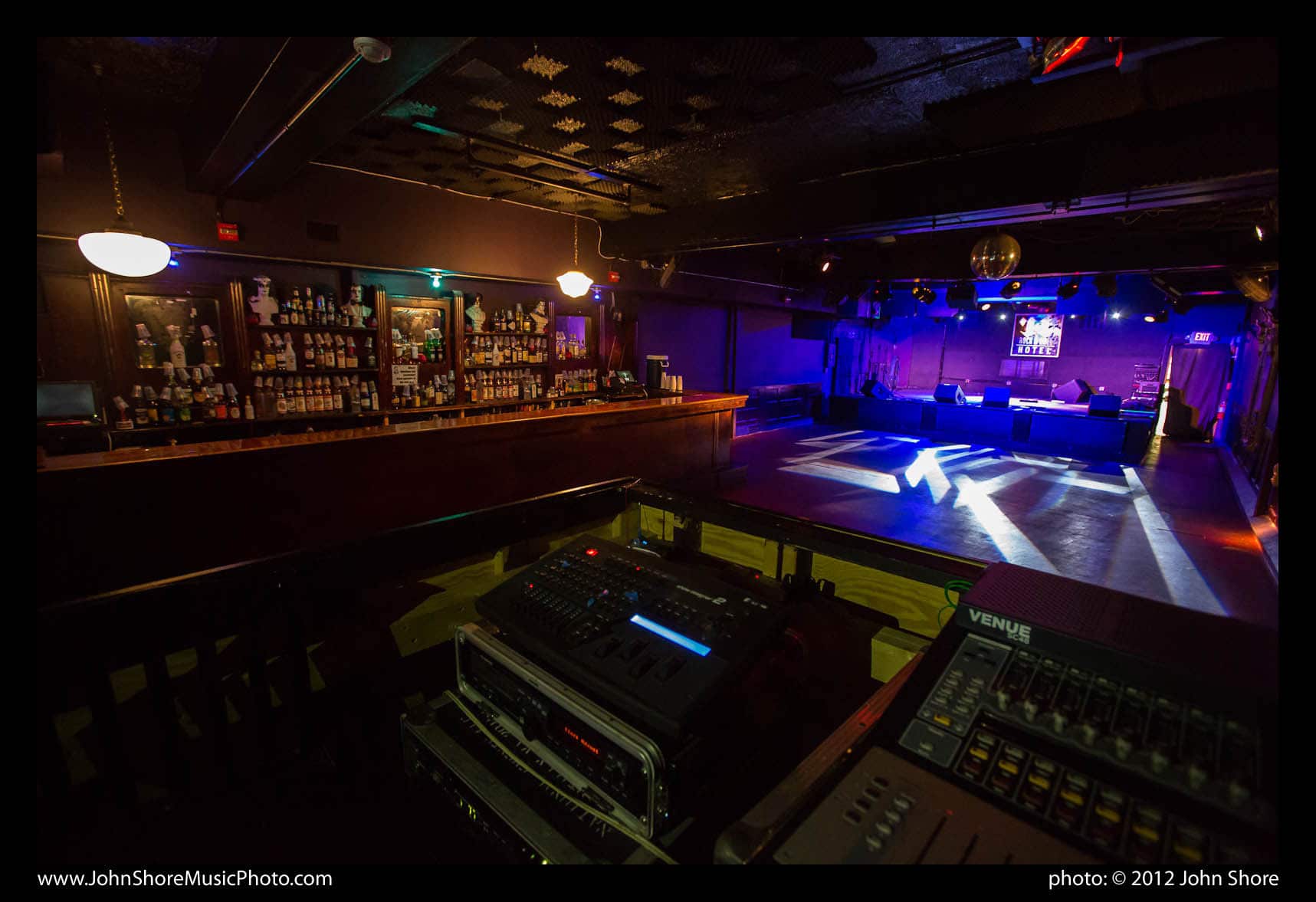
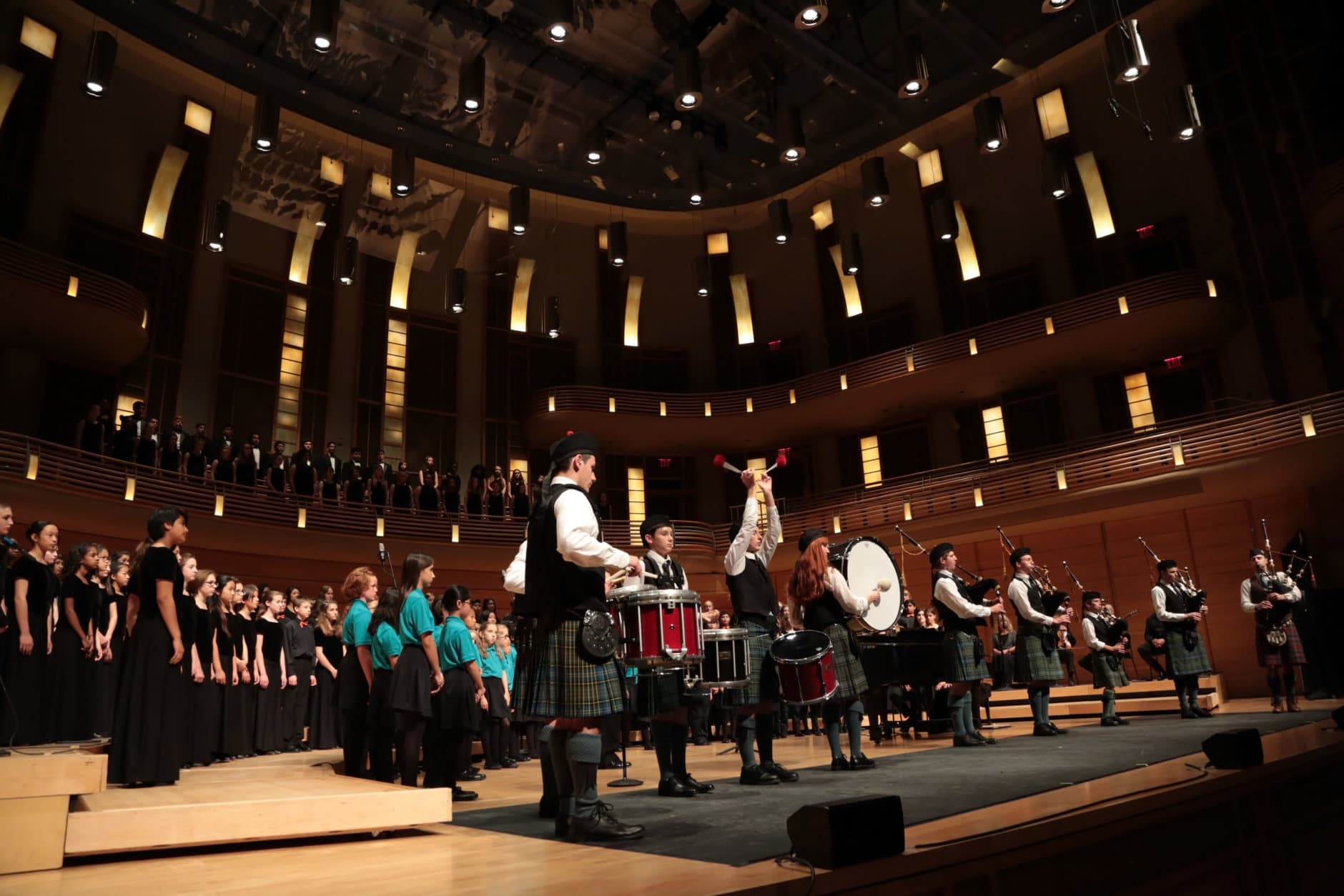
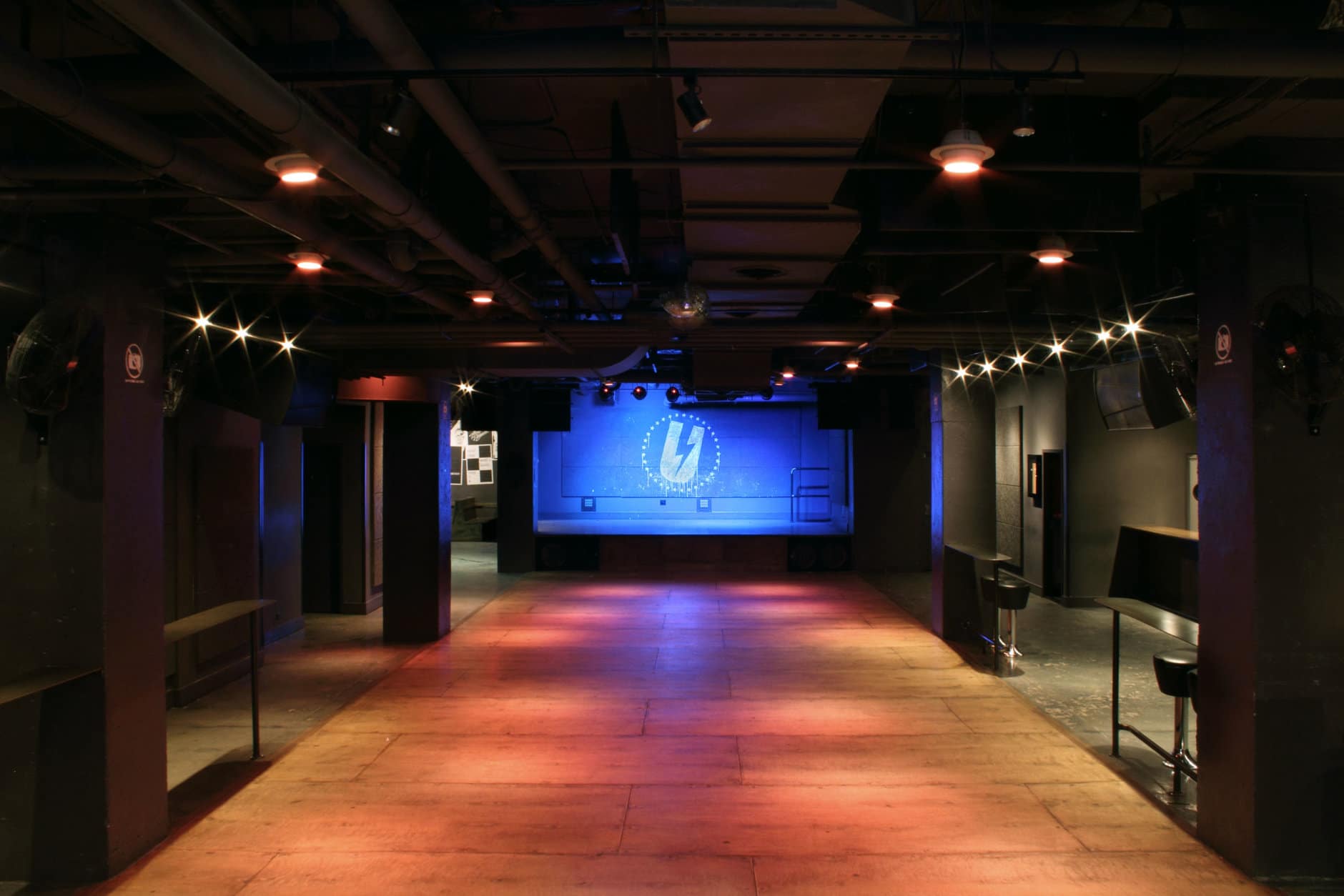
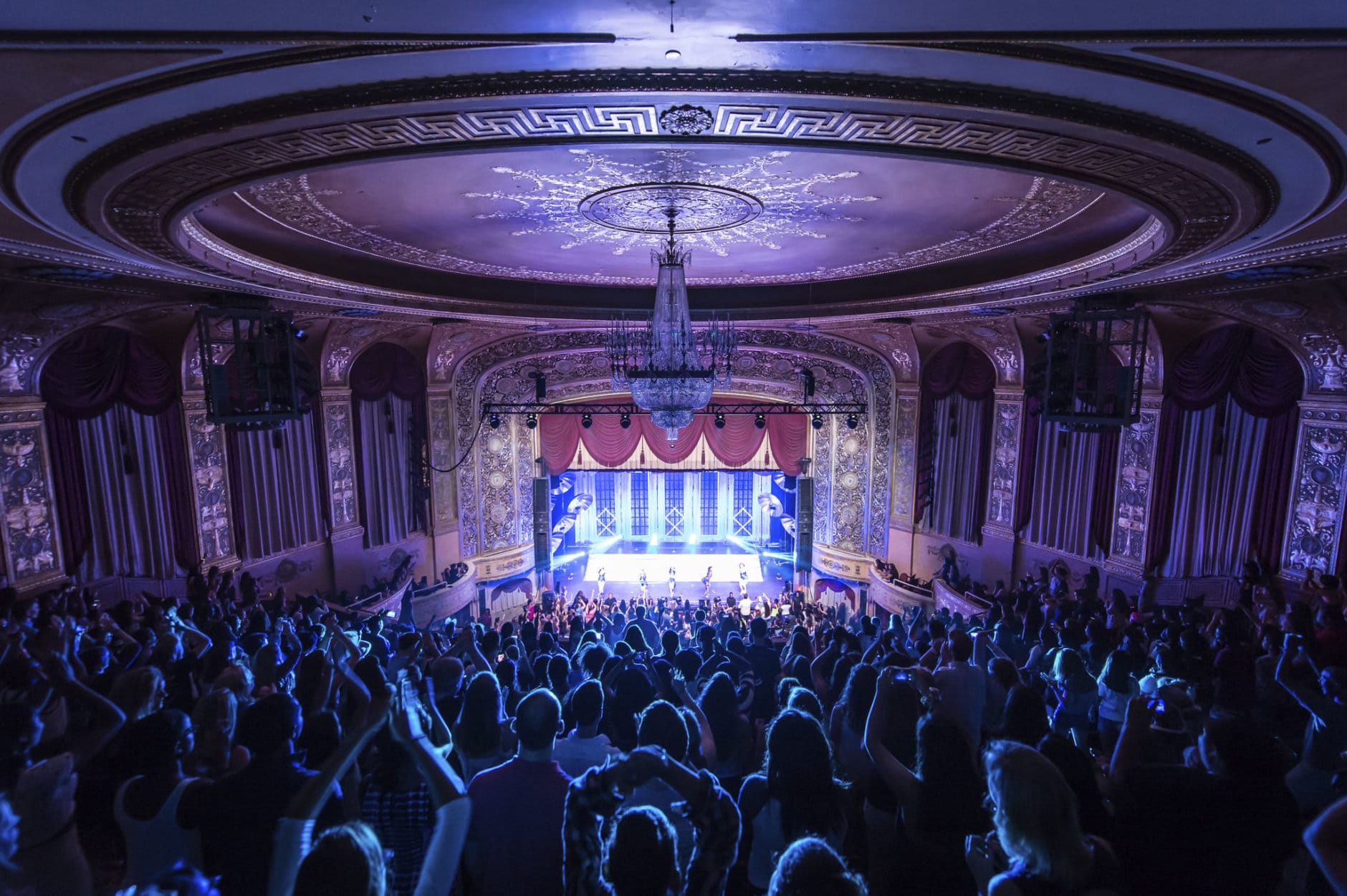
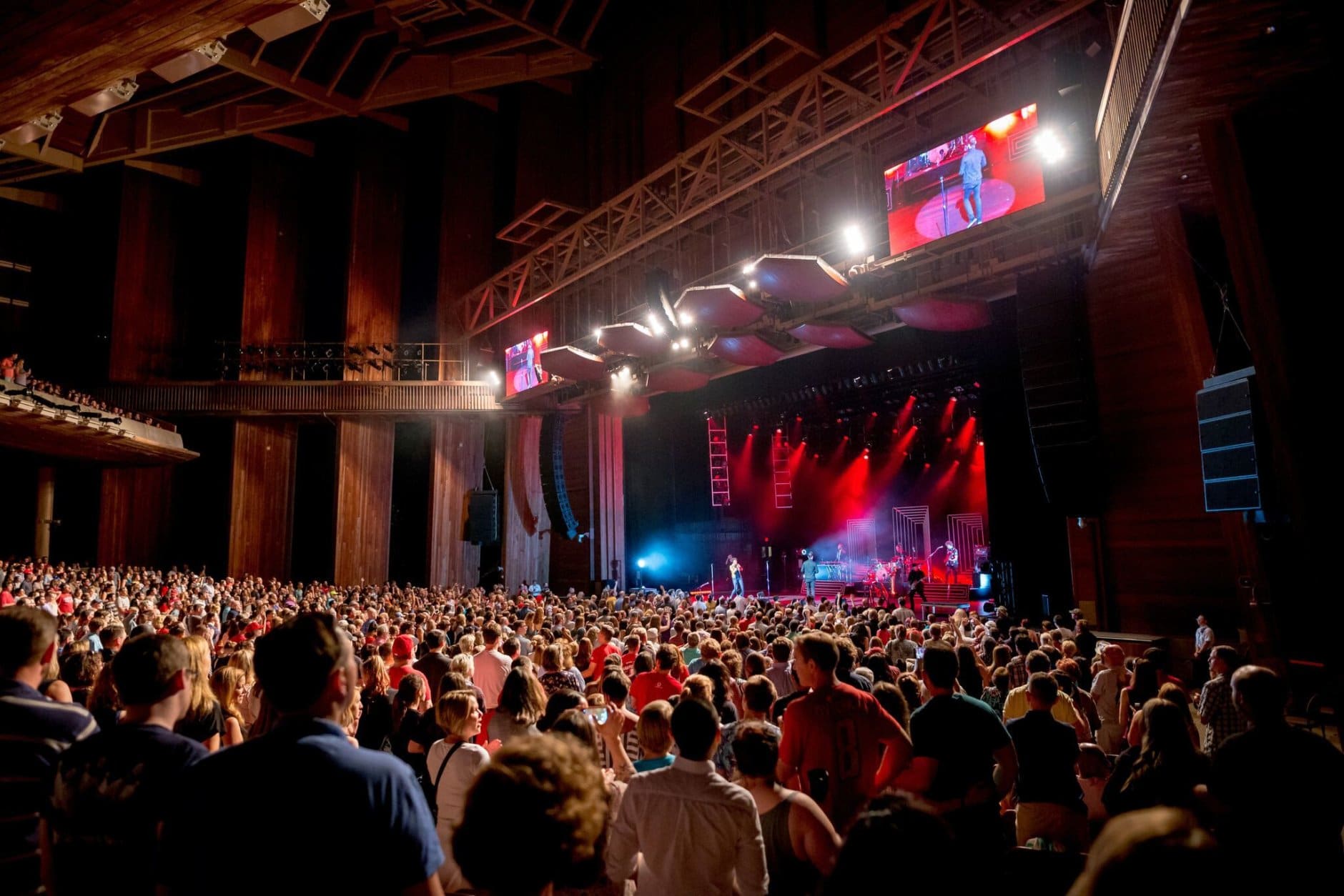
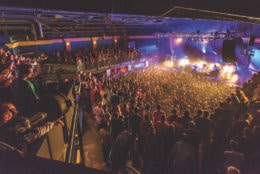
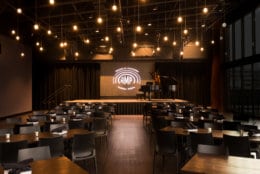
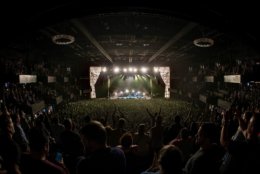
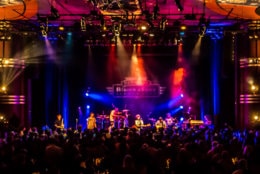
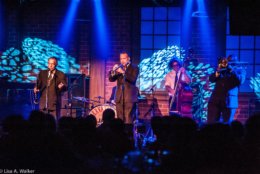
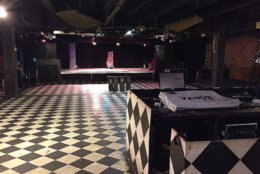
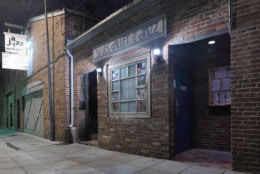
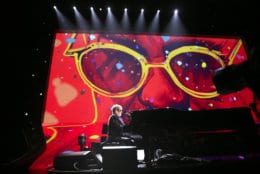
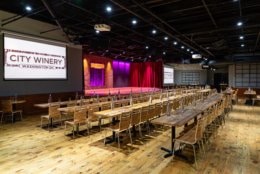
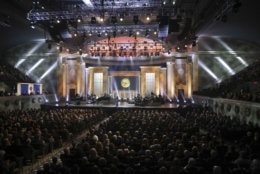
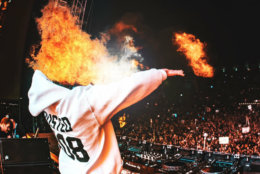




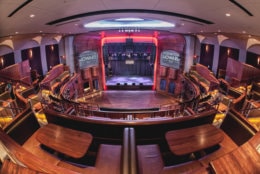
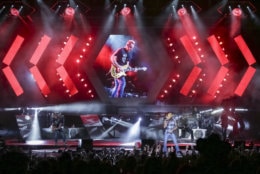


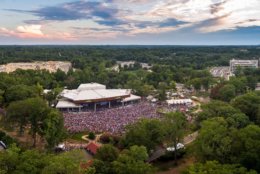
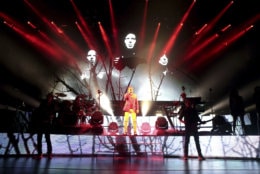
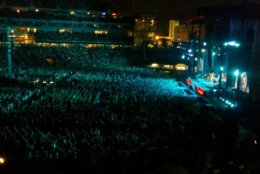
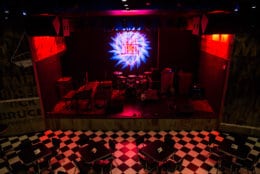

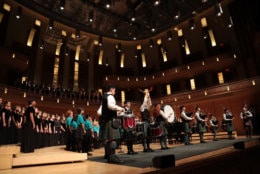
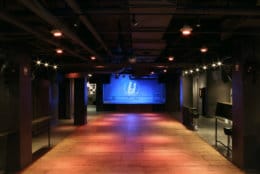
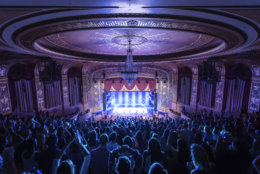

WASHINGTON — Who says the nation’s capital must only be known as a political town?
It may be years before D.C. has the reputation of a music city like Austin, Texas, Chicago, Nashville, Tennessee, New Orleans, New York or Los Angeles. Yet the foundation has been laid with a rich history, from the jazz of Duke Ellington to the go-go of Chuck Brown, the R&B of Screamin’ Joe Neal to the telecasters of Link Wray, and the punk scene of Dischord Records.
Today, the D.C. music landscape is as vibrant as it has ever been with The Anthem and 9:30 Club respectively ranking No. 1 and No. 3 in global club ticket sales. From big stadium shows to a variety of intimate venues popping up all over town, this buffet of options paints a stark artistic contrast to tired Beltway stereotypes of stuffy lobbyists and pretentious politicians.
“The DMV is exploding with music,” Wolf Trap President Arvind Manocha told WTOP.
“Inside the Beltway, we have to have as many stages as New York, Chicago, L.A. or any other big city,” Blues Alley Manager Kris Ross said.
The creative economy means booming business. Marketing company Destination D.C. said the city saw a record 22.8 million visitors in 2017, spending $7.5 billion and supporting 75,000 jobs. Of the “eclectic cultural travelers” surveyed, 86 percent were interested in “music in nationally known venues,” while 68 percent noted “headliner entertainment” as important.
“We’ve got this perception of monuments, memorials and museums as part of the visit, which is extremely important. However, we try to focus on things like nightlife,” Destination D.C. President Elliott Ferguson told WTOP. “So to us, the music scene plays a huge role in attracting visitors to the city. It helps to diversify how they spend time here in the nation’s capital.”
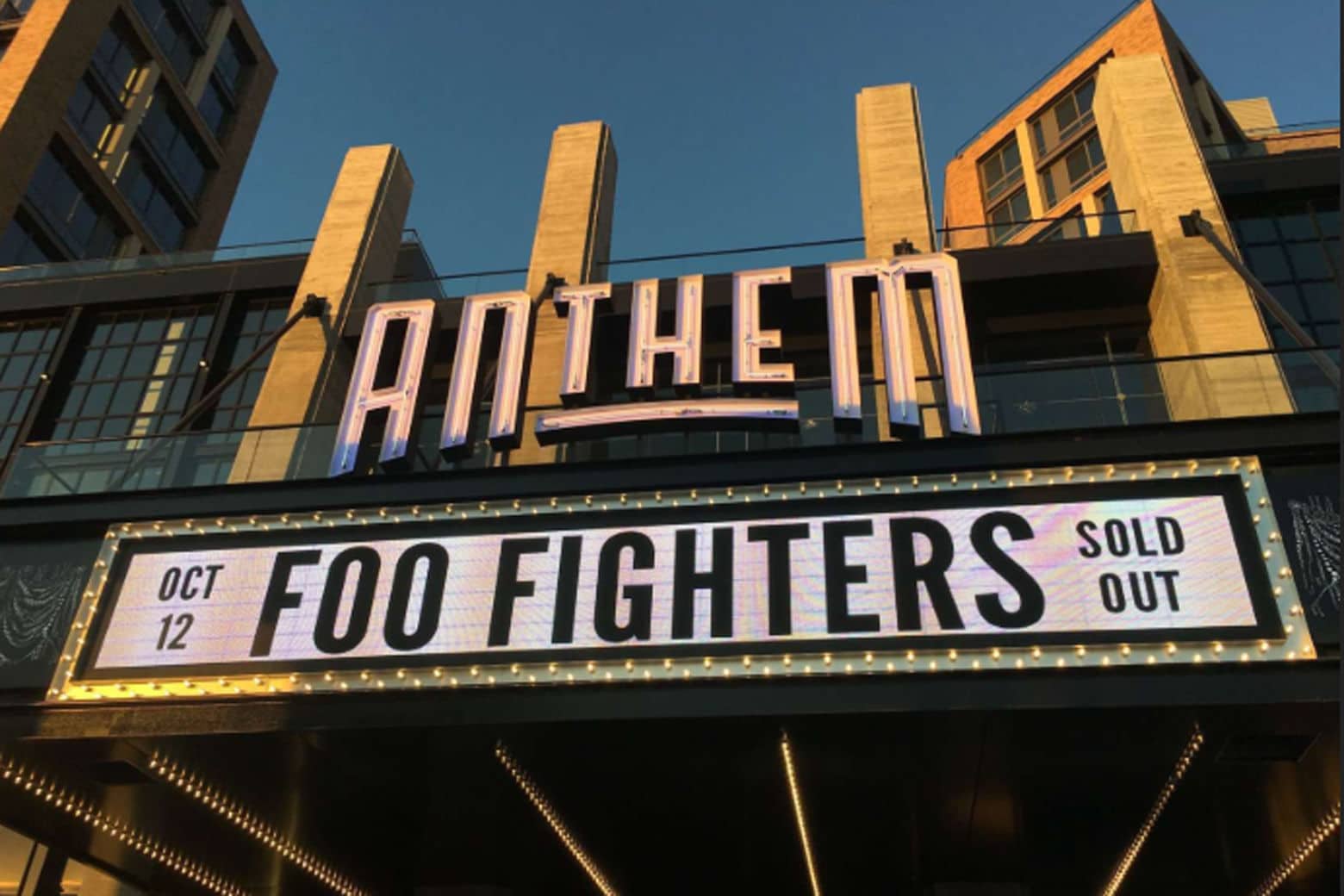
The major players
Like all cities, the stadium venues bring marquee names. Capital One Arena recently hosted Drake, Pink, U2 and Elton John; MGM National Harbor brought Bruno Mars, Cher and Britney Spears; Nationals Park saw Bruce Springsteen, Billy Joel and James Taylor; and Fed-Ex Field delivered Taylor Swift, Guns N Roses and Beyonce with Jay-Z, not to mention the superstars each weekend in farther-flung staples like Jiffy Lube Live and Merriweather Post Pavilion.
“The largeness of a stadium show is very exciting, no question,” said Seth Hurwitz, who runs Merriweather as part of the region’s preeminent concert promotions and production company I.M.P. “My favorite show ever was the Rolling Stones at RFK Stadium on July 4, 1972. That was great. But to see a band in a small place is also very exciting. [Monumental CEO.] Ted Leonsis is a good friend of mine, but I’m sorry Ted, I’ve got mouths to feed!”
Hurwitz is the undisputed kingmaker of D.C. concerts. Not only has he fortified the bastion of live indie music at 9:30 Club, he has expanded his reach with the city’s hot new venue, The Anthem, transforming the Southwest Waterfront on The Wharf. Opening in October 2017, the buzzy venue has welcomed such titans as the Foo Fighters, Lorde, Jack White, The Killers, Bob Dylan, Queens of the Stone Age, Erykah Badu, LCD Soundsystem and the Goo Goo Dolls.
“The 9:30 Club is the place you can go, see a band up close at a reasonable ticket, fall in love with a band [and] start your honest relationship with an act,” Hurwitz said. “[The Anthem] is a great place to see bands that have gotten bigger than the 9:30. … We’ve solved a decadeslong issue [where] there hasn’t been venues of this size built just for music. We built it just for music. The bands are now showing up saying, ‘There’s nothing like this. This is truly unique.'”
Hurwitz’s quest to nab arena shows required some last-minute changes in the design.
“We built the place to accommodate the big production sound, lights and video screens, but the thing we didn’t think about was that a lot of these big shows bring their own stages,” Hurwitz said. “The night before, we get this frantic call from Lorde’s agent: ‘The stage isn’t going to fit! She brings her own stage!’ I called up Monty Hoffman, who built The Wharf, and said, ‘Did we build the stage yet? Don’t.’ … So, we built a stage that can be removed. Because of Lorde we didn’t build a permanent stage, and we can now remove our stage if we need to.”
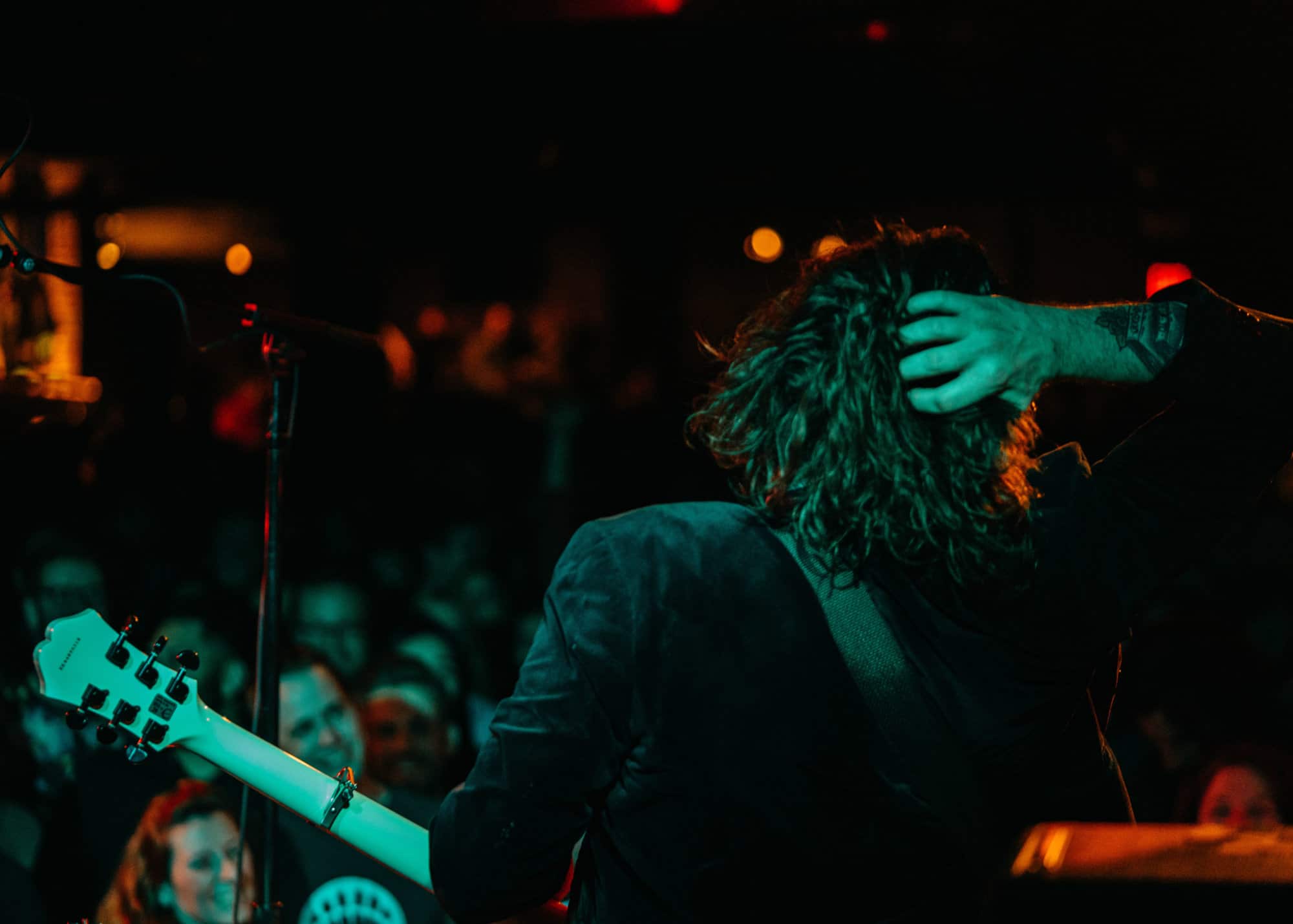
Times they are a changin’
While I.M.P. is leading the boom on The Wharf, other venues are having to adapt to increasingly gentrified neighborhoods and a live music industry ravaged by the internet.
Take the beloved “smoky rock club” The Black Cat, founded in 1993 by Dante Fernando and then-Nirvana drummer and Virginia native Dave Grohl. The joint recently announced that it’s streamlining its operation by closing the downstairs level, including the Red Room Bar and secondary concert space Backstage, to focus all of its energy on the main stage upstairs.
“That neighborhood has gotten expensive enough now that there’s not as many people that live in walking distance to the club,” Fernando told WTOP. “It’s a lot of changes, but it allows the club to be able to continue without have to stress about the financing of it all of the time. We get some rentable space out of the downstairs, we make the club a little easier and more fun to run on the inside. …. I think it’s going to be a really good change. I’m excited about it.”
It’s a brave new era for a club that helped launch such bands as Blur, Elastica and Radiohead.
“Part of the reason we opened was because there were so few [venues],” Fernando said. “A lot of it was an answer to 9:30 Club being one of the only larger venues in town. So for the first chunk of time, maybe 10 years, very few venues and each one did its thing and mostly stayed in its lane. … That all changed, there’s a lot more venues now [starting] maybe 10 years ago.”
Changing times are also affecting The Birchmere, founded in 1966 in Alexandria, Virginia.
“In those days, we all stayed in our own backyard,” founder Gary Oelze told WTOP. “We do play the older acts and guys with a history. They still have fans and they’re still around.”
That includes such legends as The Rascals, Righteous Brothers, Moody Blues, Ry Cooder, B.B. King, Etta James, Buck Owens, Lyle Lovett, Vince Gill, Merle Haggard, Waylon Jennings, Ann Wilson, Pat Benatar, Little Richard, Johnny Cash and Ray Charles’ final performance.
“It’s the last of the listening rooms,” Oelze said. “There used to be a lot of great listening rooms in Frisco, Chicago, and they’re all gone. … If we emptied the room out, we could put 2,000 people and empty the tables out, but that’s not what we do and not what we want.”
This principled stand has won over generations of fans — despite the influx of new venues.
“It’s a seller’s market because of all the places that have opened,” Oelze said. Promoter Michael Jaworek added, “It’s challenging when we cannot receive grants that non-profits receive. And, because of liquor laws in Virginia, we cannot receive subsidy from the brands as they can in the District [and] Maryland. …. We’re not playing with other people’s money.”
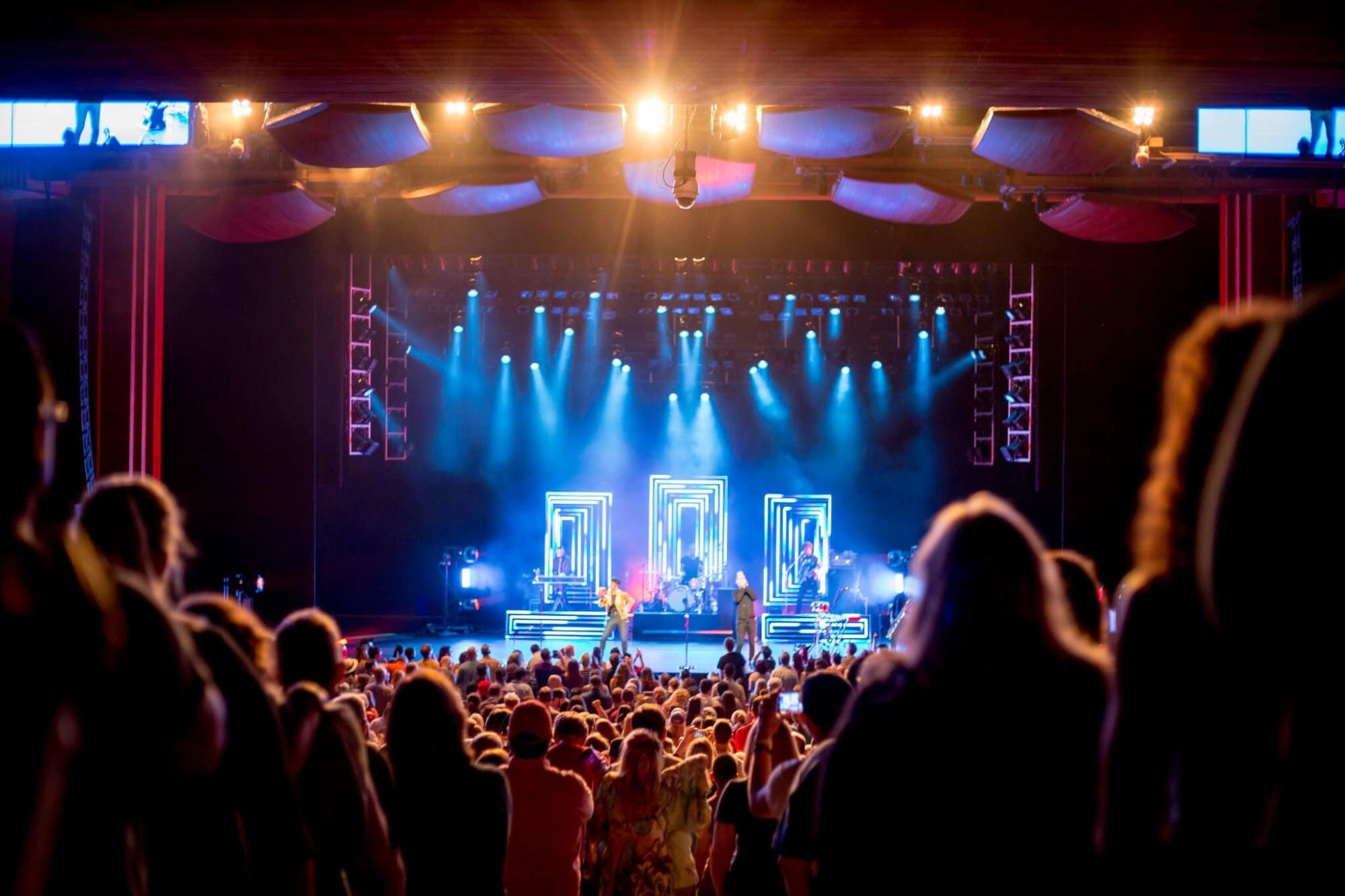
Federally funded oases
Federal funding has its perks at Wolf Trap, a rustic oasis in Northern Virginia since 1966.
“It’s the only national park for the performing arts,” Manocha said. “We are owned by the people. … You’re surrounded by 100 acres of protected green space. … You don’t see buildings, the sprawl, the urbanity. … Our founder realized that D.C. was going to grow west toward Dulles so they protected that space early, and we reap the benefits today. We have an oasis from the change that is going to be there as a national asset forever.”
That includes picnic opportunities on the lawn, where you can bring your own food and drink, including alcohol, and a wooden pavilion that this year welcomed Alanis Morissette, Alison Krauss, Charlie Puth, Fitz & The Tantrums, Barry Manilow, Roger Daltrey, Steven Tyler, Reba McEntire, Bruce Hornsby, Boy George, Bryan Adams, Mary Chapin Carpenter and Jeff Beck.
“We strive to be something that everybody feels like there’s a night at Wolf Trap for them,” Manocha said. “We had Sting last summer for three nights. He was very complimentary [and] talked about how Wolf Trap was one of the great experiences of his touring life.”
Joining Wolf Trap as a federally funded space is the gorgeous Kennedy Center. Founded in 1971 along Rock Creek Parkway, it provides picturesque views of the Potomac River.
“The uniqueness of being federal property has a certain allure that you don’t have elsewhere,” National Symphony Orchestra Artistic Administrator Justin Ellis told WTOP. “There’s an awe factor [of] being in a living memorial to John F. Kennedy. … We’re probably one of the only performing arts centers that presents high art and contemporary art forms [together]. Contemporary doesn’t mean 20th century art; it means hip-hop, comedy, bluegrass, rock.”
Lately, that’s included NSO collaborations with rappers, organized by A Tribe Called Quest alum Q-Tip, who is now the Kennedy Center’s first-ever artistic director of hip-hop culture.
“One of the first large ones was with Nas doing his album ‘Illmatic,’ ” Ellis said. “We did the world premiere with Kendrick Lamar of ‘To Pimp a Butterfly.’ We did a retrospective with Common. We’ve had a lot of R&B artists, from the greats like Patti LaBelle and Diana Ross, to contemporary voices like Ledisi, Brandy and Boyz II Men. We’re really pushing forward.”
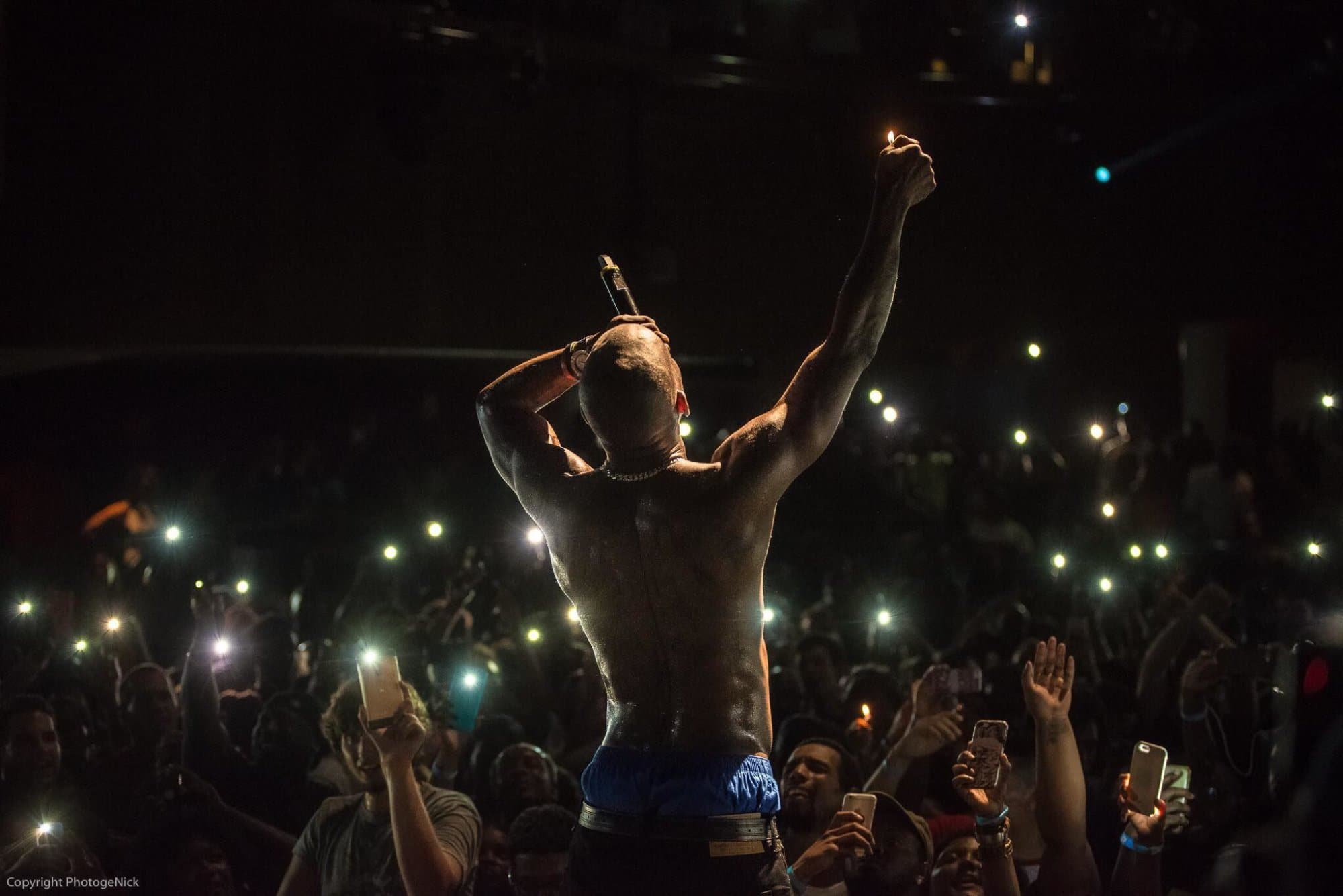
Restoring our roots
It’s a shift from the days of “Black Broadway” along the U Street corridor, where the Howard Theatre opened in 1910 for the likes of Ella Fitzgerald, Sammy Davis. Jr., Lena Horne, James Brown, The Supremes, Stevie Wonder and Marvin Gaye. Its famous 2012 renovation made way for DMX, Eric B. & Rakim, Bone Thugs-N-Harmony, Esperanza Spalding and The Roots.
Similarly, the Lincoln Theatre across from Ben’s Chili Bowl was renovated in 1994 after closing during the 1968 race riots amid the assassination of Dr. Martin Luther King Jr. Since 1922, it has hosted the likes of Pearl Bailey, Louis Armstrong, Lionel Hampton, Cab Calloway, Billie Holiday and Sarah Vaughan. Today, it is owned by the city and operated by I.M.P. for a string of recent hot tickets, including Lauryn Hill, Nas, Peter Frampton, Billy Idol and Patti Smith.
“The Lincoln is a beautiful venue,” Hurwitz said. “It feels like a special night out. It’s nice, it’s luxurious. Who doesn’t love an old theater? It’s special. I always love going there. … It represents a lot of history and you feel like you’re in old Washington, D.C., because you are!”
Equally historic is the Warner Theatre, built in 1924, closed in 1989 and reopened in 1992.
“It’s a beautiful theater,” Live Nation’s Mark Mangold told WTOP. “You can feel the history in there. It’s been updated obviously, so it doesn’t feel like you’re sitting in an old antiquated space, but it still has that feel, that warmth to it that’s really genuine that just drips from it.”
Outside the 1,800-seat theater, you will find the names of past famous acts etched in the sidewalk with bronze nameplates and cement signatures like the Hollywood Walk of Fame.
“Who hasn’t played there?” Mangold said. “It’s right up there with any theater in the country in terms of history and prestige, [hosting] everybody from Frank Sinatra to The Rolling Stones. Most notably, Prince played one of his last shows at The Warner [in June 2015]. He gave us a week’s notice and Stevie Wonder sat in. It was an amazing night. I still get goosebumps.”
Meanwhile, Blues Alley maintains bragging rights as America’s oldest continually operating jazz supper club. It opened in 1965 when Georgetown still had The Bayou, Cellar Door, Crazy Horse and Showboat Lounge. Today, it’s the last standing with newcomer Gypsy Sally’s.
“There was a famous picture in The Post of George Thorogood walking out of the Cellar Door playing his guitar, walking across the street to [Desperado’s]. [Jimmy Thackery], who was across the street, walked back to the other side and switched spots,” Ross said. “Anybody in the jazz world the past 50 years has played Blues Alley: Harry Connick Jr., Dizzy Gillespie, Sarah Vaughn, Maynard Ferguson, Ertha Kitt, Phyllis Hyman and the late, great Eva Cassidy.”
The deep list of historic guests is matched by an equally throwback atmosphere.
“We’re actually in an alley,” Ross said. “It’s an old brick carriage house built in the 1800s. … It definitely has a speakeasy vibe. … The dressing rooms are upstairs so the artist literally has to walk through the audience. … As the artist walks through, somebody grabs your shoulder and it’s Dizzy Gillespie or Wynton Marsalis. … You’re literally in the audience. … Right in your lap. I call it seat belt jazz. Put your seat belts on because there’s a lot of wind coming your way.”
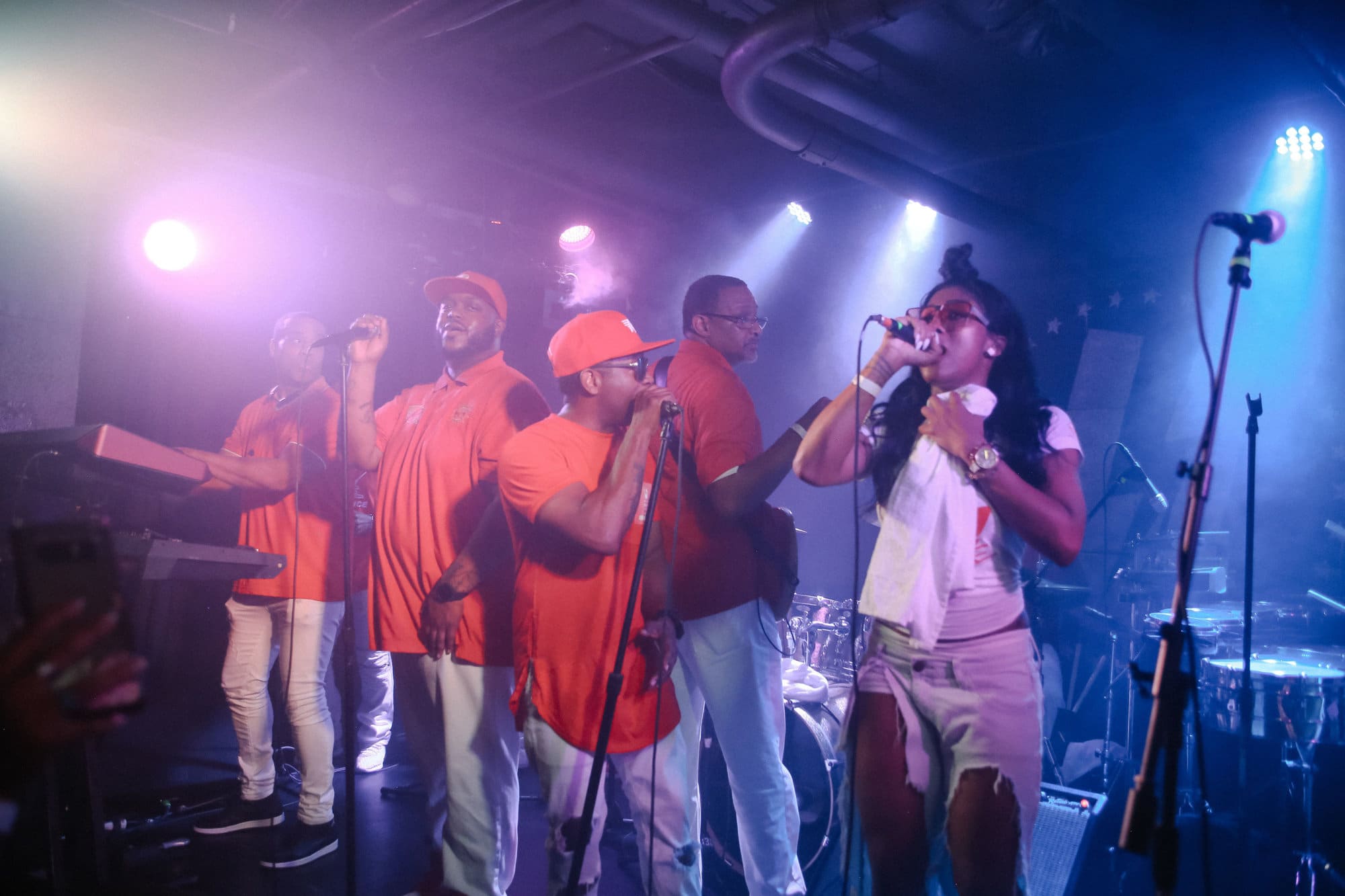
New upstarts on the block
While the historic venues have modified their operations to keep up with the changing times, countless upstarts are throwing their hats in the ring to get a piece of the live music pie.
If you want a shining example of a new concept making serious inroads in the shadows of history, check out U Street Music Hall. It opened in 2010 across the street from the signature saxophone sign of Bohemian Caverns, which opened in 1926 and closed in 2016.
“Duke Ellington played his first concert right across the street from us,” U Street Music Hall founder Will Eastman told WTOP. “There’s a lot of music history in that area from jazz to funk to soul to punk to go-go to underground dance music, right up to what we’re doing today, which is the newest, coolest, best new music that exists. … We are chasing sound constantly. … I love listening to Spotify playlists [and] being like, ‘Oh, they played U Hall six months ago.’ ”
That includes the first D.C. concert by Sam Smith, pop-ups by Drake and breakthrough shows by Odessa, Rüfüs Du Sol, Nina Kraviz, Flume, Halsey, Charli XCX and Louis the Child.
“We are what I describe as a room you want to play to break in the market,” Eastman said. “When you sell out U Street Music Hall, that’s a special moment. … It’s a touchstone for accomplishment, artistic achievement, and hopefully even bigger and better things to come.”
Pearl Street Warehouse has a similar goal on the Southwest Waterfront. It’s the newest boardwalk brainchild of Bruce Gates, who long ran the destination spot Cantina Marina. The watering hole is temporarily closed for Wharf construction, but it is set to return by 2022.
“D.C. finally has access to its own waterfront,” Gates told WTOP. “Our joint is one of the coolest places to see live music you’ll find. Our niche [is] a pretty small joint. We call ourselves a jewel box. We can accommodate about 300 max, standing room only, an intimate setting.”
The live music “jewel box” opened Oct. 11, 2017, with two nights of Booker T. Jones, who signed the load-in door, which was widened to fit his famous Hammond B3 organ. Since then, the joint has seen the likes of Amy Helm, Billy F. Gibbons and Sarah Shook & The Disarmers.
“Our aspiration from the beginning was — and continues to be — to develop local music in the D.C. area, provide for artists the best stage they’ve ever performed on, in a small enough setting that they can fill a house,” Gates said. “Also, to focus on national touring acts and get either ‘baby bands’ that are just beginning to do their touring [or] to get the ‘underplays.’ ”
The “underplay” is a killer technique of booking a major act in an intentionally small venue to create an aura of exclusivity, such as when Green Day played the 9:30 Club in 2016. It’s practically a daily occurrence over at The Fillmore in downtown Silver Spring, Maryland.
Since 2011, the hip venue has attracted the hottest artists for younger audiences. After opening with Mary J. Blige, it has since welcomed a lineup of Ariana Grande, Chance the Rapper, Sam Hunt, Maren Morris, Travis Scott, Anderson .Paak, Migos, Snarky Puppy, Niall Horan, Macklemore, Kesha, Meghan Trainor, Cole Swindell and Five Seconds to Summer.
“It’s standing, G.A., high energy,” Mangold said. “The energy the artists get coming back from a place that small energizes them. … It’s 1,000 people downstairs. We also renovated upstairs so that no matter where you are, there’s risers. If you’re at the back of the balcony, you’re elevated, so you’re able to see the stage anywhere. … There’s not a bad spot in the house.”

Wine, dine and jam
If you’ve outgrown the idea of “standing room only,” you can leave Silver Spring and cross over into Northeast D.C. to kick back at City Winery, which opened on Okie Street in April.
“We’re the newest venue in the city,” Program Director John O’Neill told WTOP. “Our vibe is probably a little different than a lot of clubs. It’s more of a cabaret style. City Winery prides itself on being a listening room. We’re also a functioning winery. … in the middle of doing a grape crush as we speak. … It’s a restaurant, an event space, a 300-capacity concert room.”
While Northeast is mostly known for the EDM turntables of Echostage and the underground alternative acts of Rock & Roll Hotel, City Winery attracts more mature audiences with the laid-back Americana tunes of Ray Wylie Hubbard, Steve Earle, Hayes Carll and Suzanne Vega.
“I’m a 50-year-old guy, I still like to go out, I book stuff that I’d like to see, I just don’t want to stand in a concrete bunker anymore,” O’Neill said. “There’s also real-life issues like babysitters. … If you can show up, see a show, have a nice glass of wine, have a meal and do all of that at once, it becomes more of an event. .. Everybody wants to sit down now. We all have bad legs!”
You’ll find a similar vibe up the road at Bethesda Blues & Jazz Supper Club and the AMP by Strathmore in North Bethesda. The latter is an offshoot of the Strathmore Mansion and Music Center, welcoming such singer/songwriters as Lisa Loeb, Paula Cole and the late Chris Cornell.
“Having a great 230-seat nightclub allows you to catch a bunch of artists on the way up,” AMP Artistic Director Joi Brown said. “AMP has a very upscale club vibe to it. You walk in and it’s fun, funky furniture and big, tall windows. It’s got a great stage in the corner and an excellent sound system. It really allows you to experience artists in a much more intimate way.”
You can similarly wine and dine at the swanky community tables downstairs beneath the restaurant of The Hamilton, which opened across the street from the W Hotel in 2012.
“I’m a music aficionado; that’s my passion, besides the restaurant business,” founder Tom Meyer said. “When I did the food downstairs, I had two things in mind. It was quiet food. Not a lot of knives and forks. Sushi, pizza, things you eat with your hands. Not a lot of clinking and clanking. It’s also food that looks good half-eaten. If somebody gets up to dance, you don’t want to see a pork chop and mashed potatoes. That’s kind of gross. Half a pizza is still sexy. … We have the ability to pull off a great show and a nice dinner, because we are a restaurant.”
If you’ve only been upstairs for dinner, you’re in for a treat when you move downstairs.
“First-time people that go down there don’t know what to expect,” Meyer said. “They make a turn, and then boom! They see it all at once and get wide-eyed and slack-jawed. They’re not expecting this sizable room. … It’s a quiet room, it sounds perfect and it’s seated. It works really well for jazz, then we love doing the jam band stuff. The hippies show up every night!”
Memorable shows include the Nevilles, Funky Meters, Kermit Ruffins, Anders Osbornes, Dr. John, The Revivalists, Marcus King and Emmylou Harris, who got her start playing Meyer’s flagship Clyde’s in Georgetown. The Hamilton also hosts titans each year at its Grammys on the Hill event, featuring Keith Urban, Alicia Keys, Little Big Town and the Zac Brown Band.
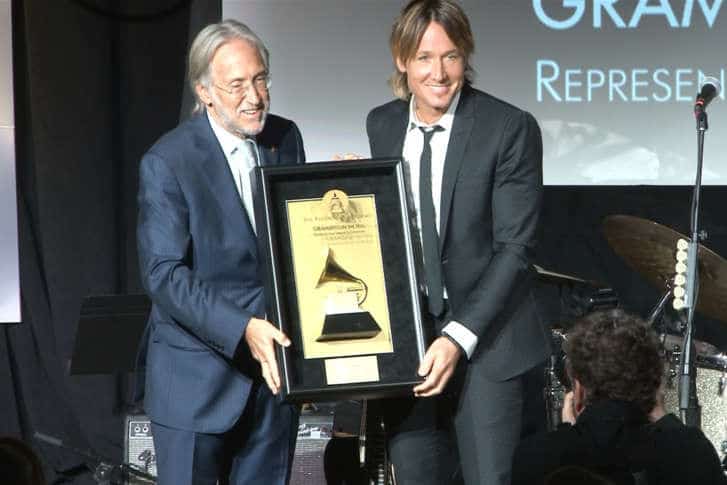
Future as a music capital
Grammys on the Hill epitomizes the city’s unique ability to draw top music celebrities to our nation’s capital. While New York has Broadway and Los Angeles has Hollywood, Washington, D.C., is quite literally the only place designated to hand out prestigious national awards.
“These things only happen in the nation’s capital,” Ferguson said. “You’ve got so many different associations headquartered here that tie their causes to celebrities, so therefore those celebrities will come for those unique events. Be it a presidential honor or any other significant honor, or the fact that you’ve got 185-plus embassies here; they may be coming for unique events tied to a specific country. These are all things you can only do in Washington.”
Each year, the Library of Congress presents the Gershwin Prize, bringing Michael Bublé to salute Tony Bennett, Corinne Bailey Rae to salute Smokey Robinson, and Elvis Costello to salute Paul McCartney. Meanwhile, the Kennedy Center Honors stages memorable tributes, such as Heart saluting Led Zeppelin’s “Stairway to Heaven,” Lady Gaga covering Sting’s “If I Ever Lose My Faith in You” and Aretha Franklin belting Carole King’s “Natural Woman.”
“The emotional reaction that the Obamas and Carole King felt, and everyone in the room felt, where you knew this was a special thing, that it doesn’t happen every day, and you’re probably not going to see it again,” Ellis said. “The specialness of the Honors is you’re finding all these different artists — this year Phillip Glass, the musical ‘Hamilton,’ Reba McEntire and Cher — it’s impossible not to be overwhelmed by the magnitude of what you’re able to do.”
This national cache holds the key to the city’s future as a rising music power. Ellis spit-balled the creation of D.C.’s own renowned music festival like Bonnaroo or Burning Man, noting the arrival of Jeff Bezos for a potential event: “Amazon presents the D.C. Music & Culture Festival.”
“We have all the pieces here, we just need to tie it together in a large festival,” Ellis said. “Imagine a solo acoustic set in front of the Lincoln Memorial, an amazing graphic artist doing video mapping on the Washington Monument, an all-night 24-hour concert at The Anthem, then you come to the Kennedy Center for a complete bonanza. … If we could pull together [and] use the infrastructure we already have in the city, it would be unmatched compared to what you can do in other parts of the country. … Who wouldn’t want to come perform here?”
Can all of the local venue owners pull together for such a monumental common purpose?
“At the end of the day, being a great music town is going to float all boats,” Meyer said. Eastman agreed, “We’re all in this together. Music is a communal thing. It’s something you can’t get on Spotify. … I just saw ‘Bohemian Rhapsody’ [and] that performance at Live Aid. … That’s what it’s about! You can’t get that on your phone. You can’t get that on your computer. You can only get that with a bunch of fellow music-loving citizens in a space. It’s beautiful.”
Hear the full conversations with all the local music venues by clicking through the gallery above.








